Pictures: Lyle Such
Words: Thu Buu
Camera: Canon 5d MkIV
This year I changed tracks, which meant my vacation months also changed. Spring vacation is in March. Last year at the girls’ weekend, we decided to celebrate our friend Lien’s engagement in Soriano, Italy at the end of March. If we were traveling all that way overseas, it only makes sense to take advantage of our time there. The problem is that March is a shoulder month in most of Europe. It’s too early for the mountain treks and too late for the best winter sports. Fortunately for us, after much research we discovered that March was the ideal month for travel in Morocco. Morocco is one of the places we have often talked about visiting, but up until this point never found time to fit into our travel schedule. So Morocco it is. Famous for its narrow alleys and specialized markets commonly referred to as souks, centuries-old mosques and kasbah ruins built into mountain sides, Morocco promised to be an eye-opening cultural immersion in a Muslim country unlike any we’ve experienced before.
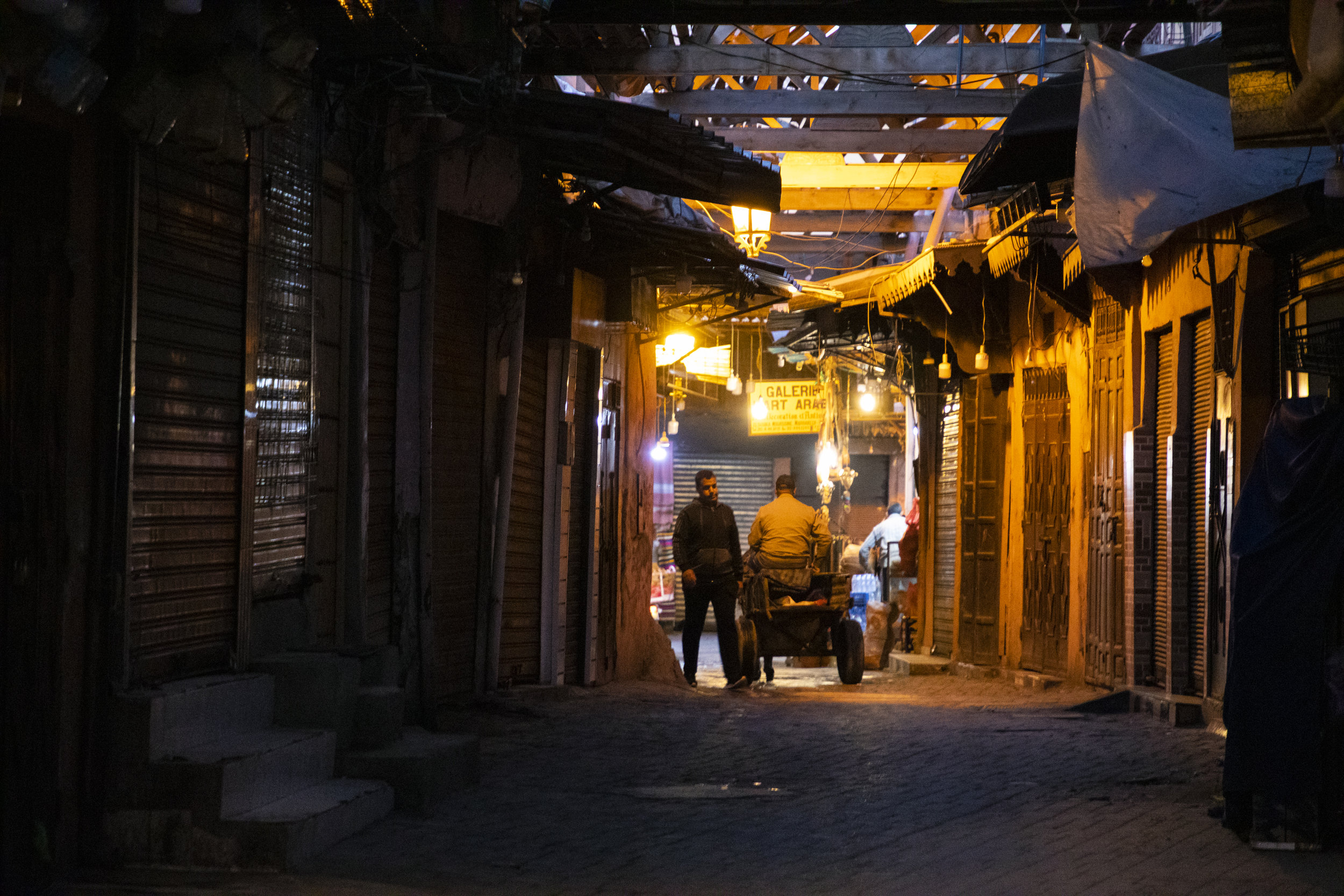
Centrally located in the middle of the country, Marrakesh is the Moroccan capital of tourism. The old medina is well tailored to tourists. Traditional souks now take on a more flea-market like arrangement with a hodgepodge of mass-produced factory-manufactured items being sold throughout the medina instead of confined within a designated souk. We arrived in Marrakesh close to midnight. Walking out of the airport, I told Lyle, I have a feeling the city will still be awake and lively. This proved to be true as we drove through the main streets on the way to our riad. After a few turns through quiet alleys lit by singular light bulbs emanating subdued orange glows here and there, the taxi stopped. The alley ahead was too small for cars to get by. A porter was waiting to guide us through the maze of tall walls and shuttered shops to our riad. We stopped in front of an ordinary looking door set in a long section of a wall. It looked nothing like the usual entrance to a hotel, but when the door opened, it was a whole different world. Again and again, as we traveled around Morocco, we would continue to be surprised by what lay behind the most ordinary of entryways.

At sunrise before the city stirs, the old Medina works its charm luring the few passersbys down narrow alleys flanked by non-descript walls the color of earth stretching high into the sky. These seemingly monotonous walls are broken up at random intervals by nonintrusive doorframes raised a few feet from the path. Now and then, a swath of melancholy glow emanating from a single, bare lightbulb dangling from a single wire nailed to the side of the wall dimly lights the way. All is calm until the morning call to prayer singing out from the highest tower of every mosque in the city breaks the silence and welcomes in a new day.
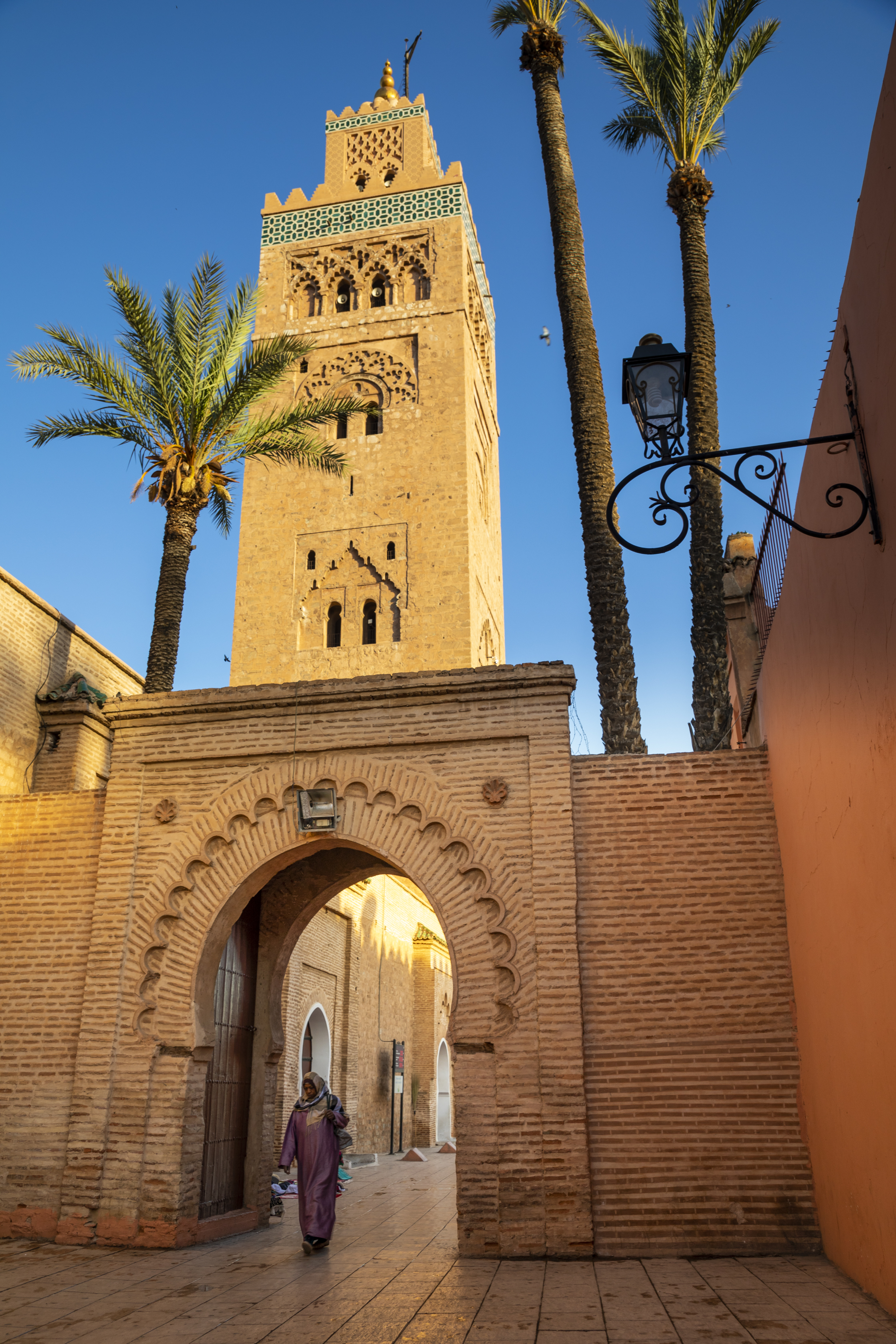

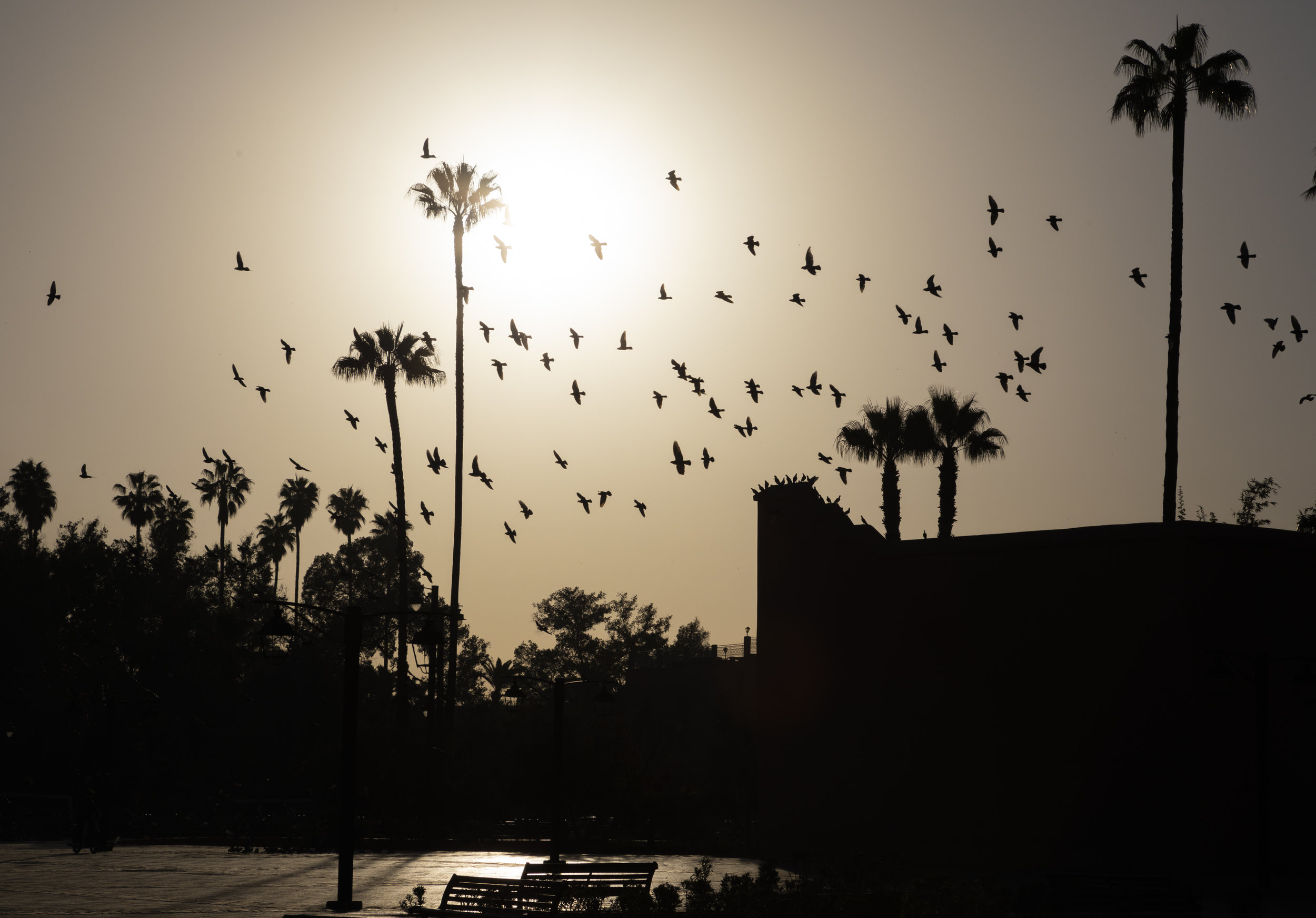
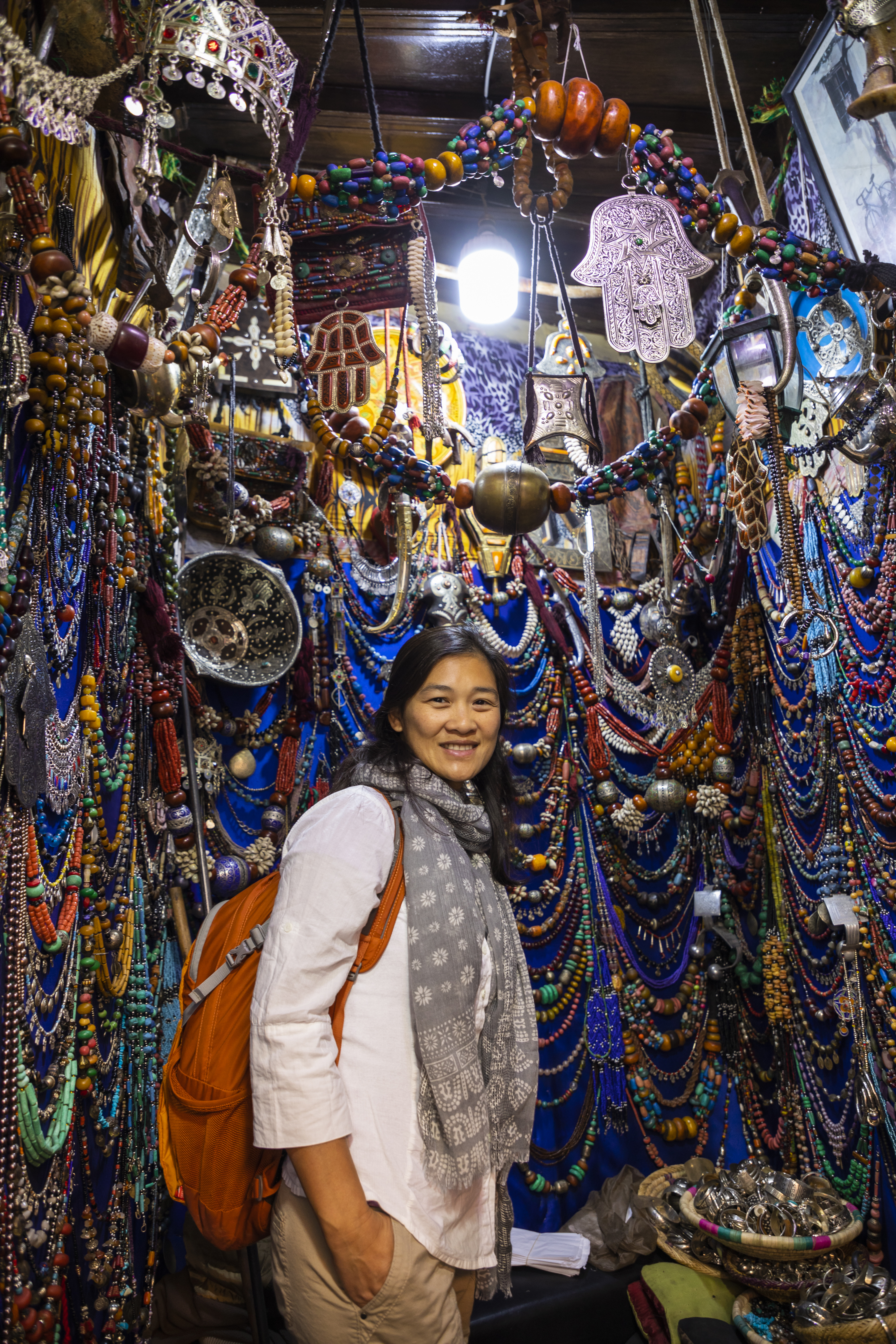


We had an early morning appointment with Fernando for a half-day photography tour of Marrakesh. Lyle was really interested in photographing people within their ordinary daily setting. In Morocco, taking pictures is a tricky business. Most Moroccans do not want tourists taking pictures of their merchandise let alone a photograph of themselves. Fernando asked permission from the storeowners to take pictures of their shops, and sometimes we asked if they would consider being in the pictures themselves. This helped make the experience more comfortable. Many times our requests were denied, and we respectfully obliged.

Many Moroccan doors are very ornate, intricately designed and beautifully crafted using many different types of materials. And then there are doors that just seem so plain and ordinary, like the door to our riad. It’s so deceiving because many times, what lies behind that boring old door is anything but boring.

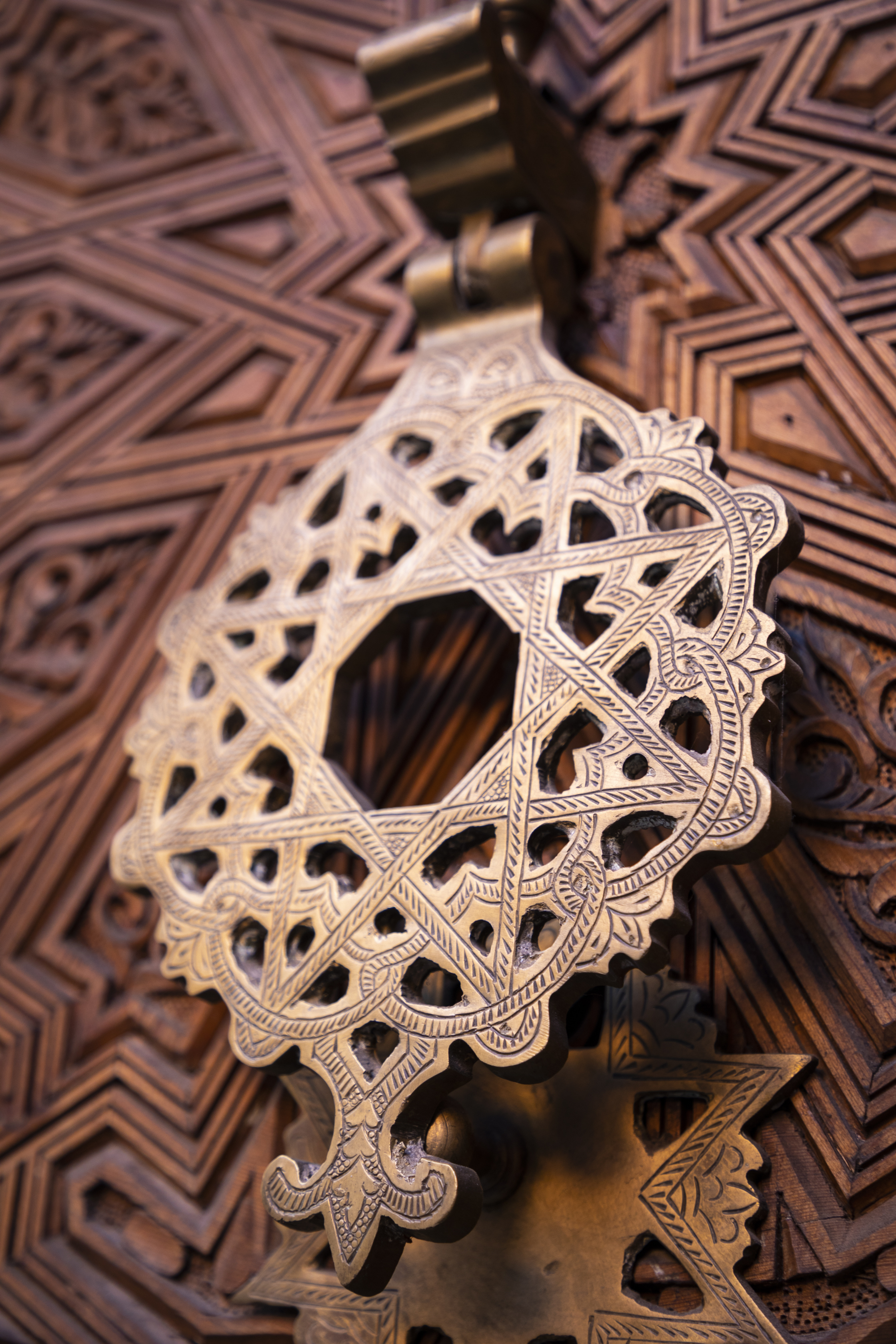
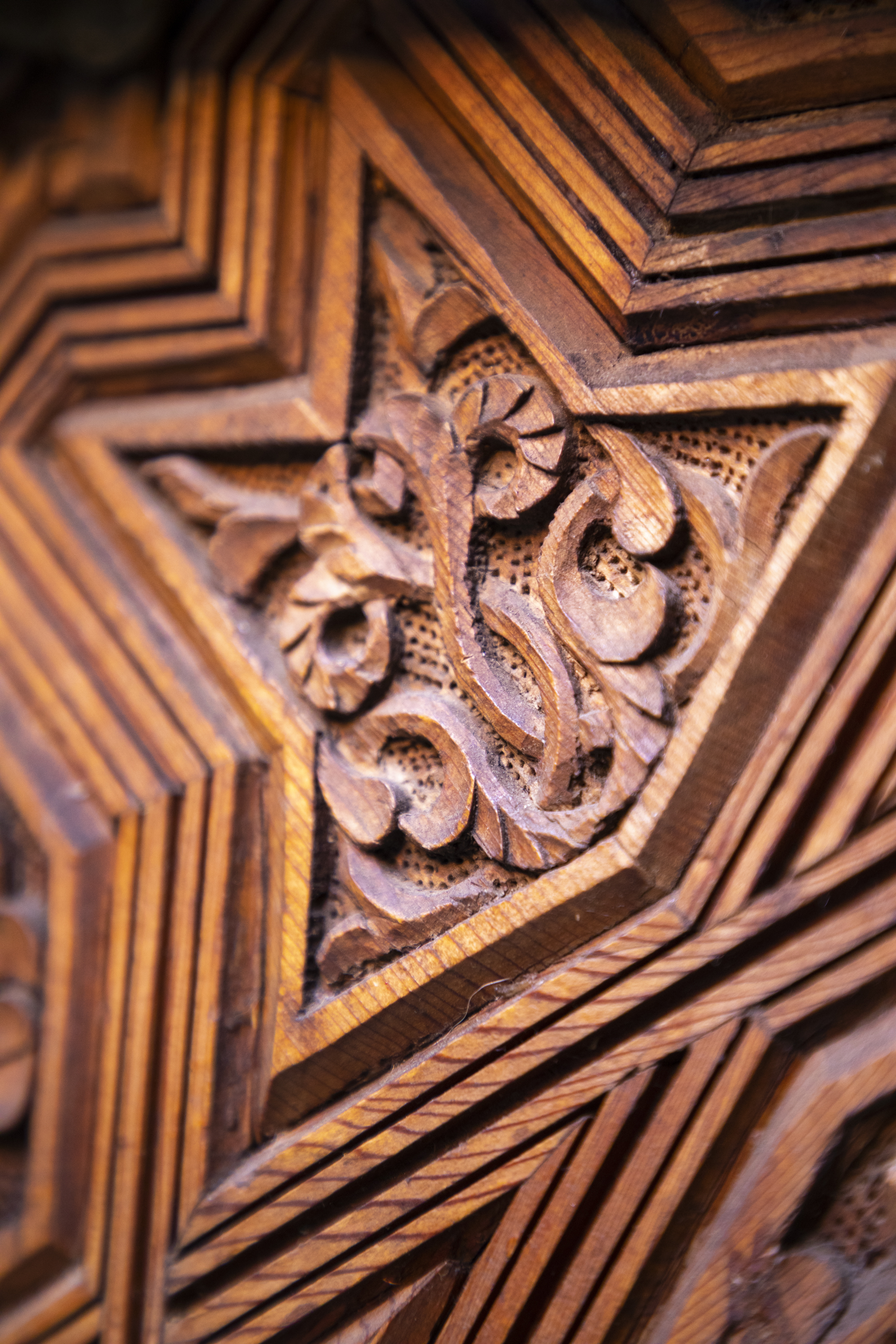



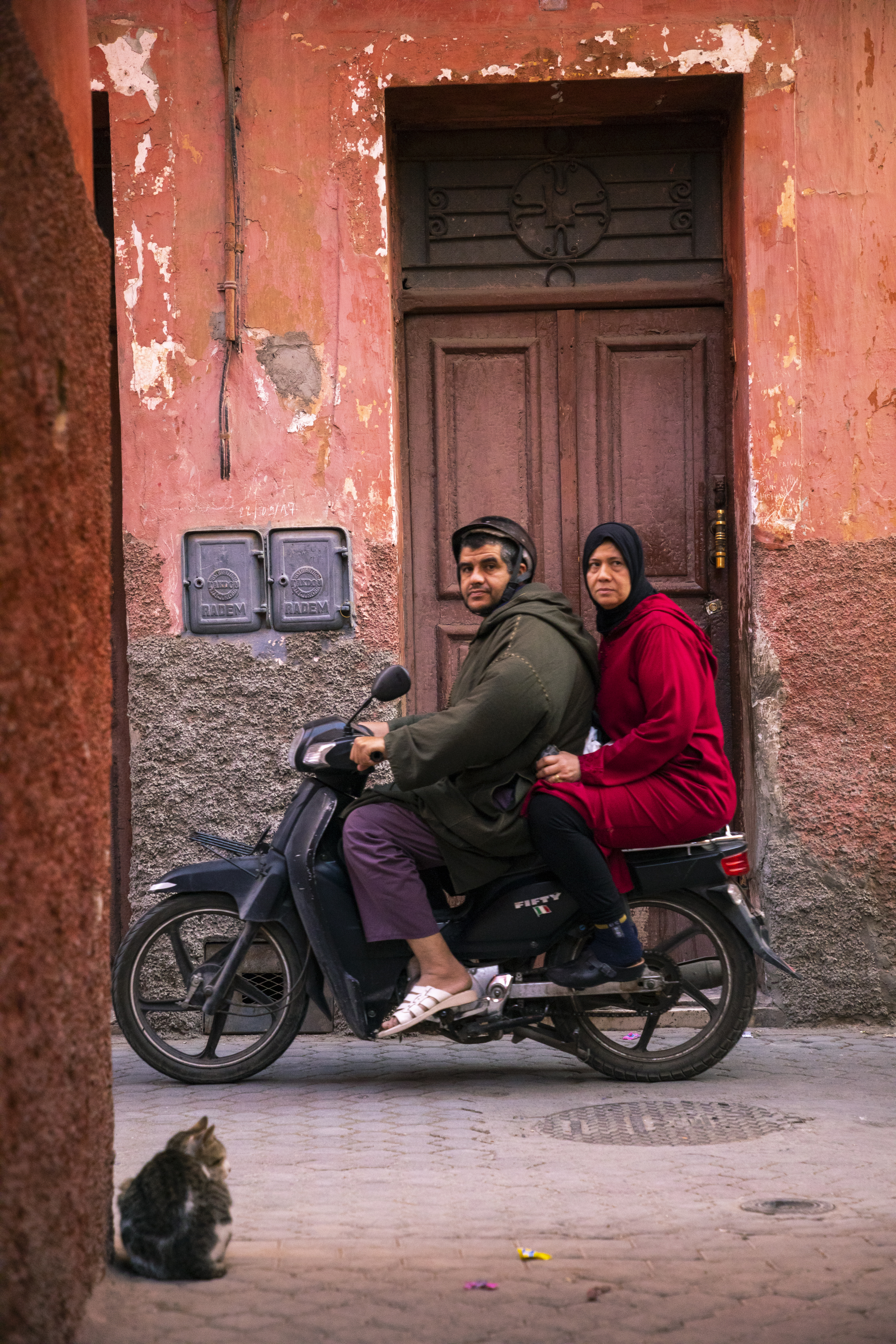
When we approached the general Moroccan people, most would shy away from the camera. Some wanted monetary compensation for their photo, which made us uncomfortable so the picture did not get taken. This is the point where conflicts may occur between the Moroccans and tourists. Despite the obvious averse feelings towards getting photographed, many tourists disregard those wishes and would proceed to snap a photo as if these people were just another merchandise on display. Fernando’s technique to photographing people in the daily surrounding was to set up a tripod around a corner or in an alley with an interesting backdrop such as a tower or an ornate door. We could be taking pictures of that object and if someone interesting walked by, we could snap a picture as well. Instinctively, most people tend to look down an alley, thus straight into the camera, as they walk by.


Here’s another cool thing about Morocco. No stray dogs! We saw cats everywhere, napping on everything, but we only saw a few dogs, all on leashes, during our whole time in Morocco. The lack of dogs made our visit a lot less stressfull, not having to worry about an angry dog jumping out of an alley and biting us.
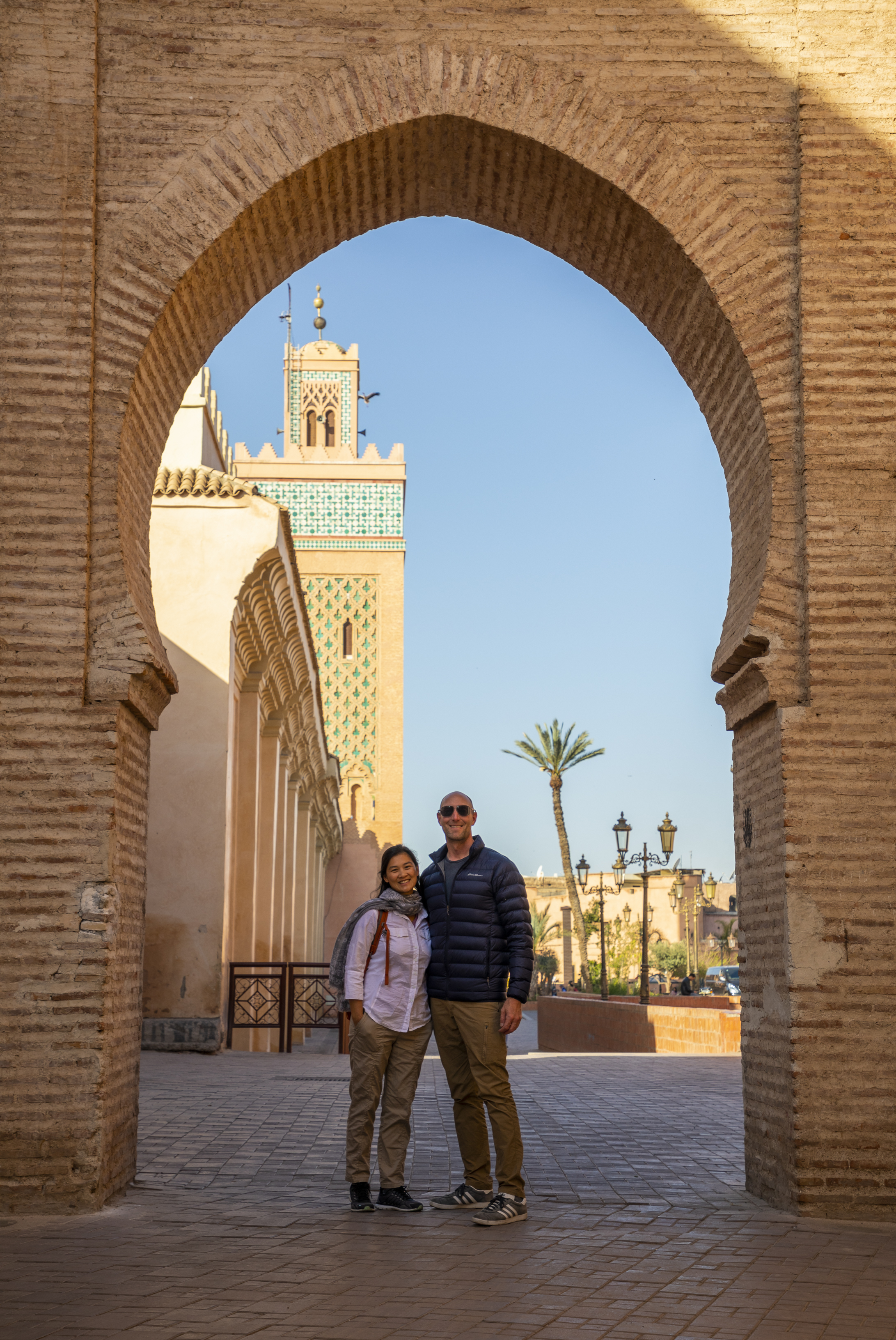

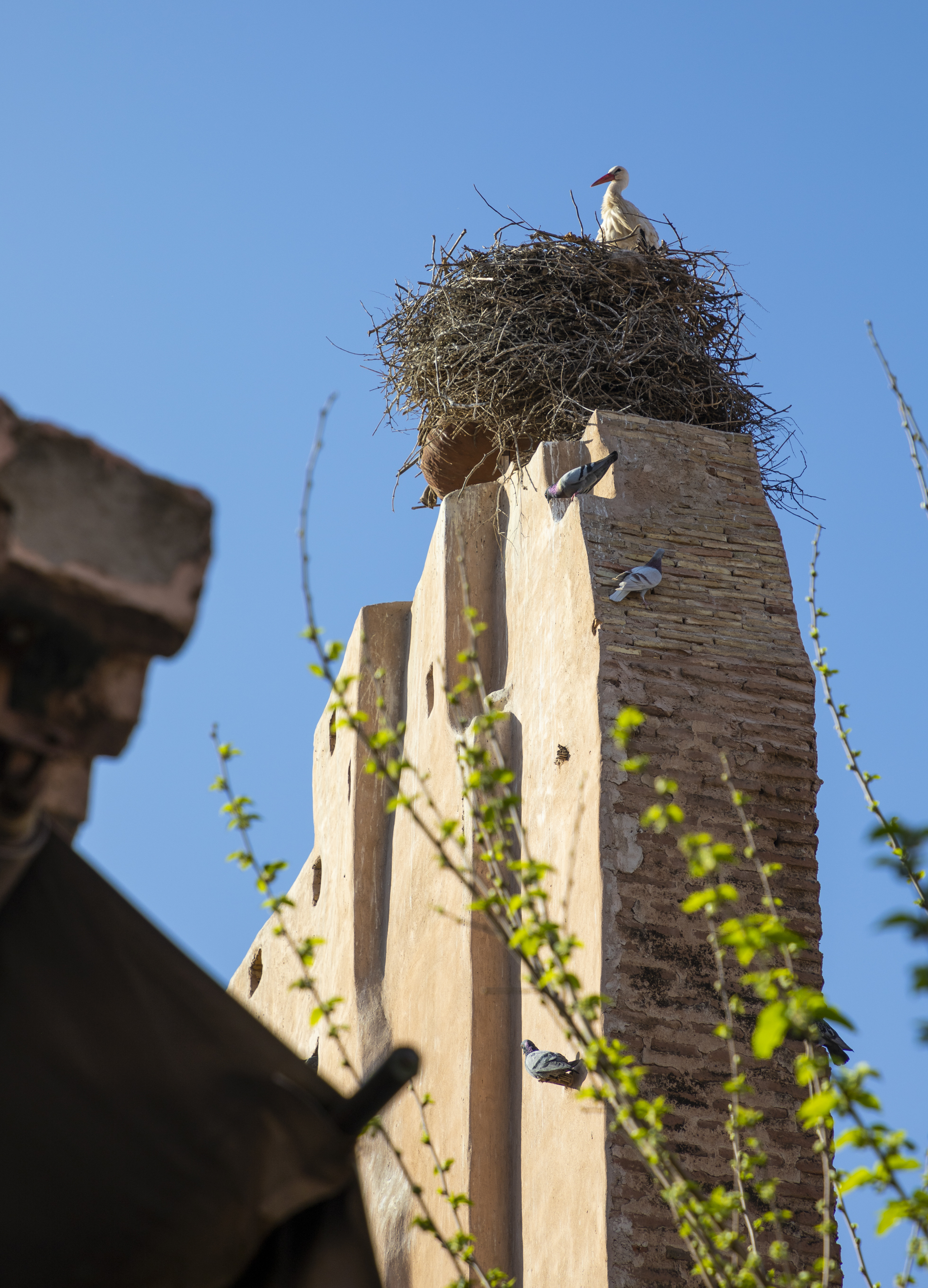
Another common resident of Marrakesh rooftops is the stork. Storks are considered holy and lucky in Morocco. It is against the law to disturb or harass them.
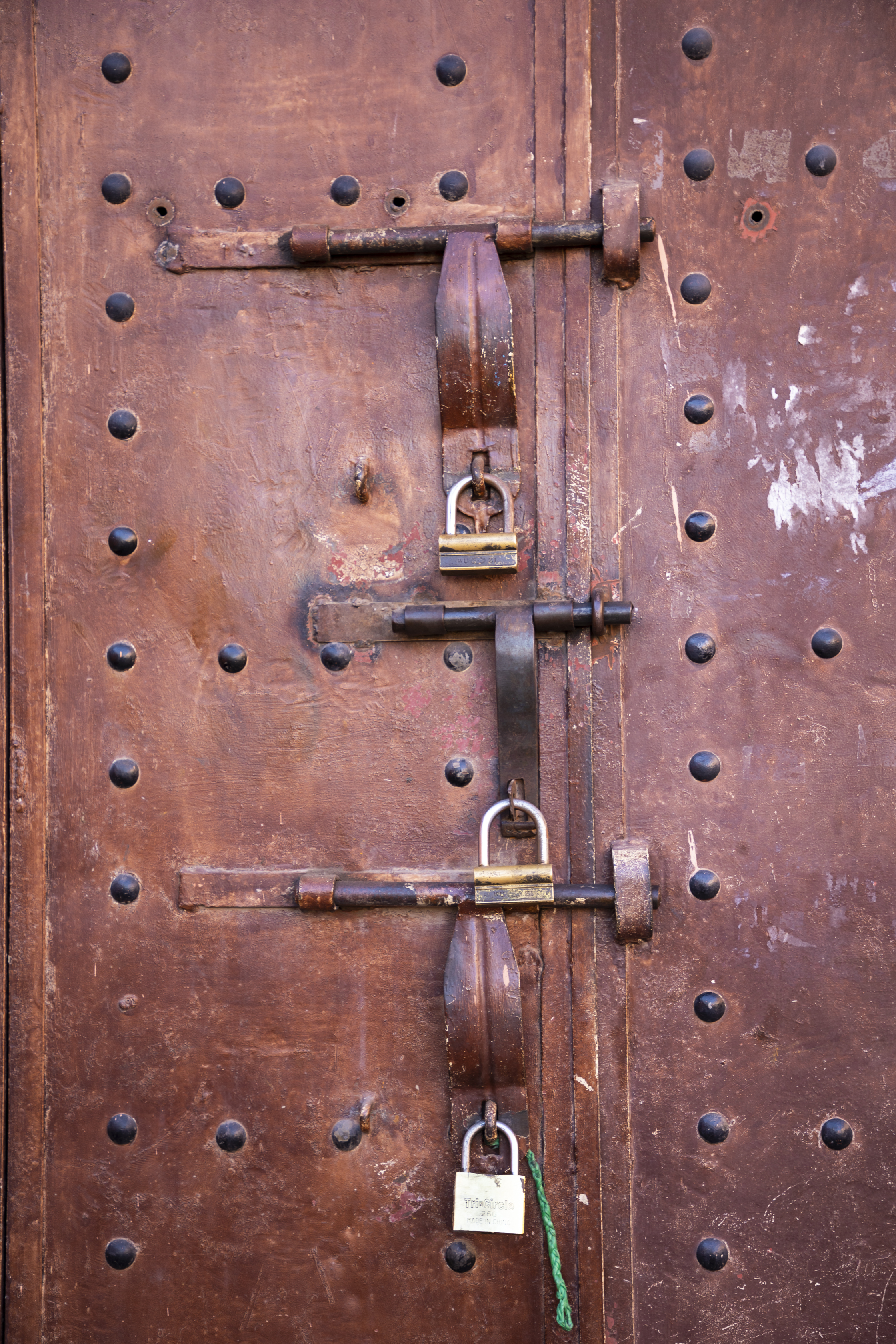

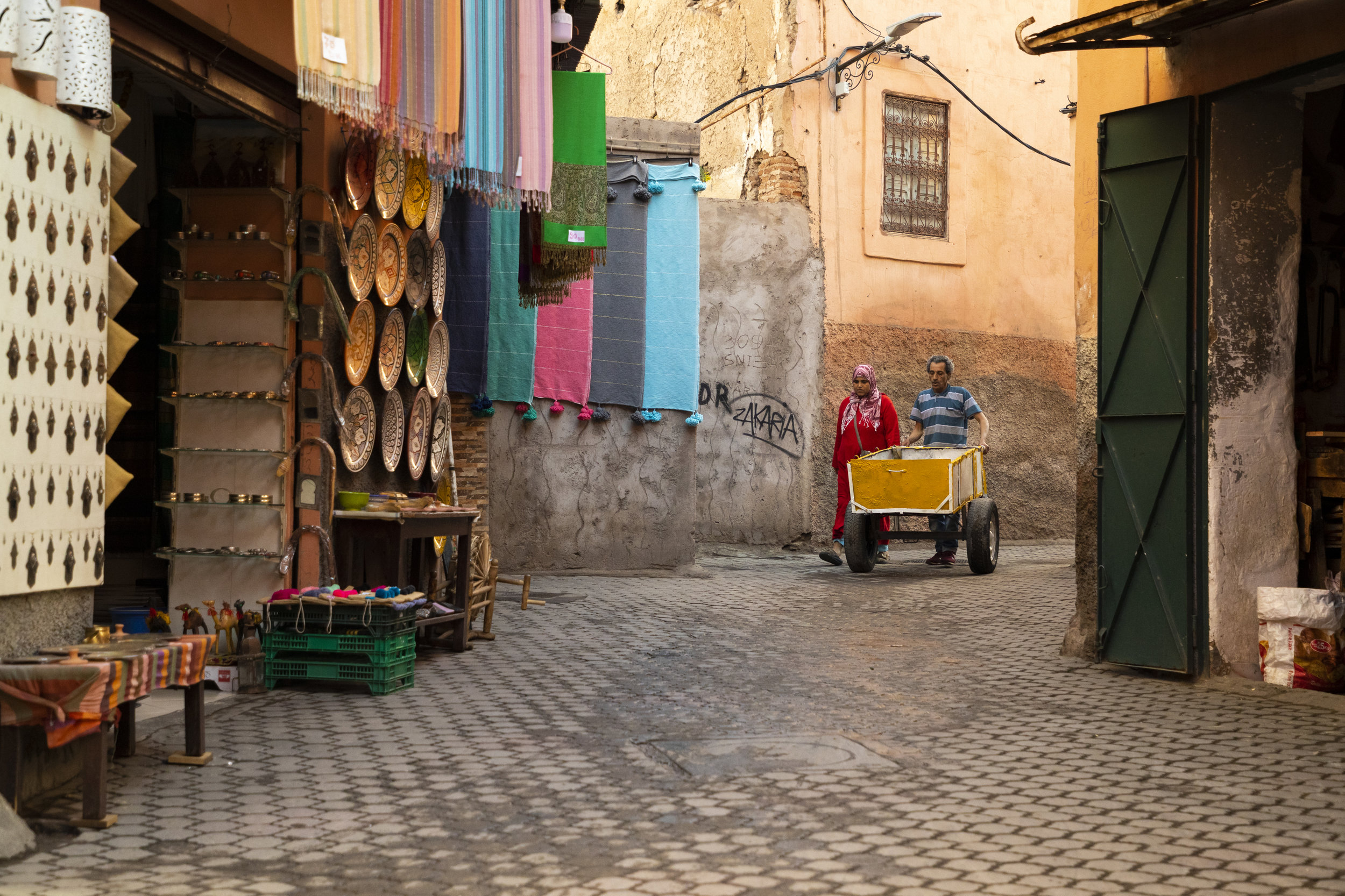
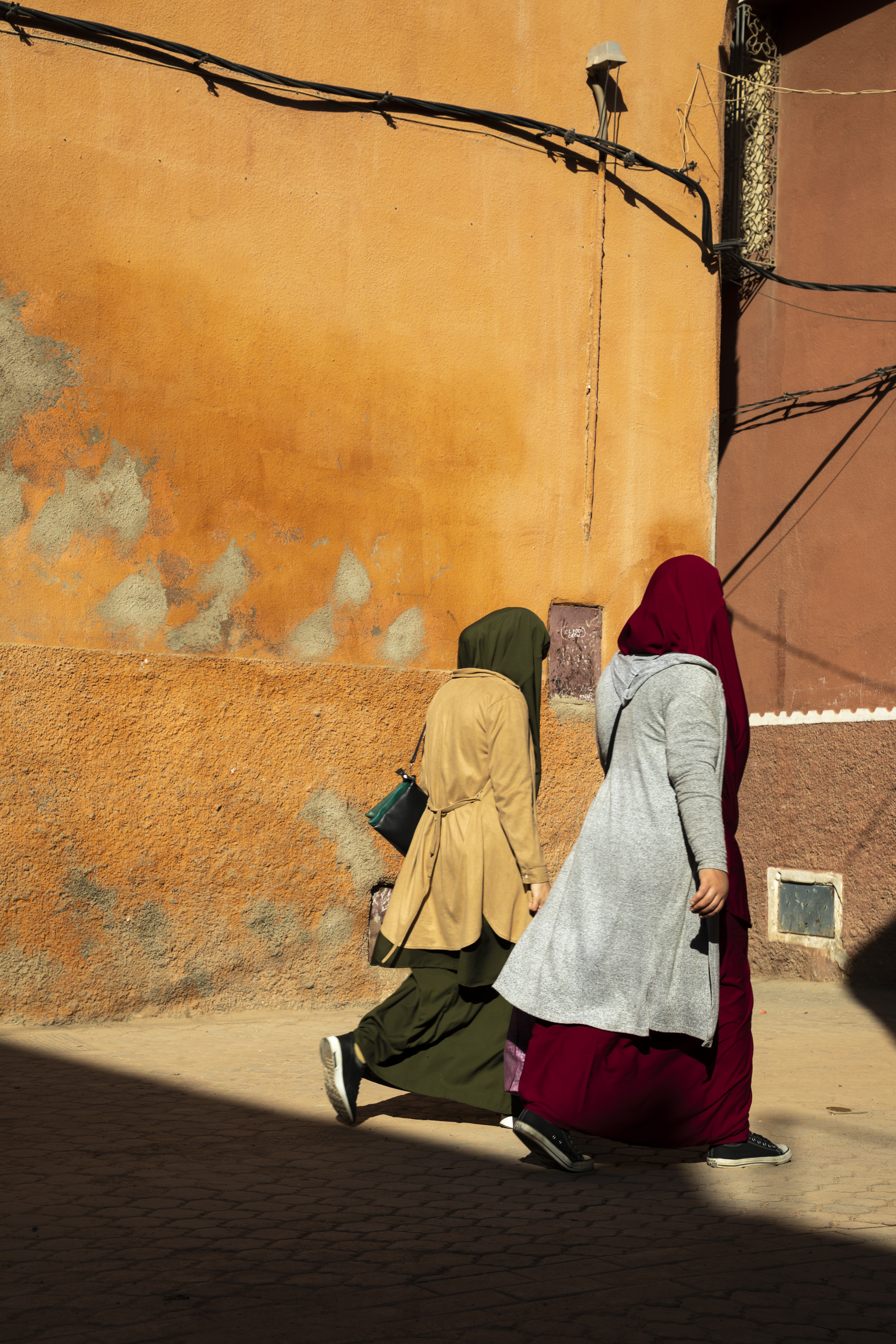

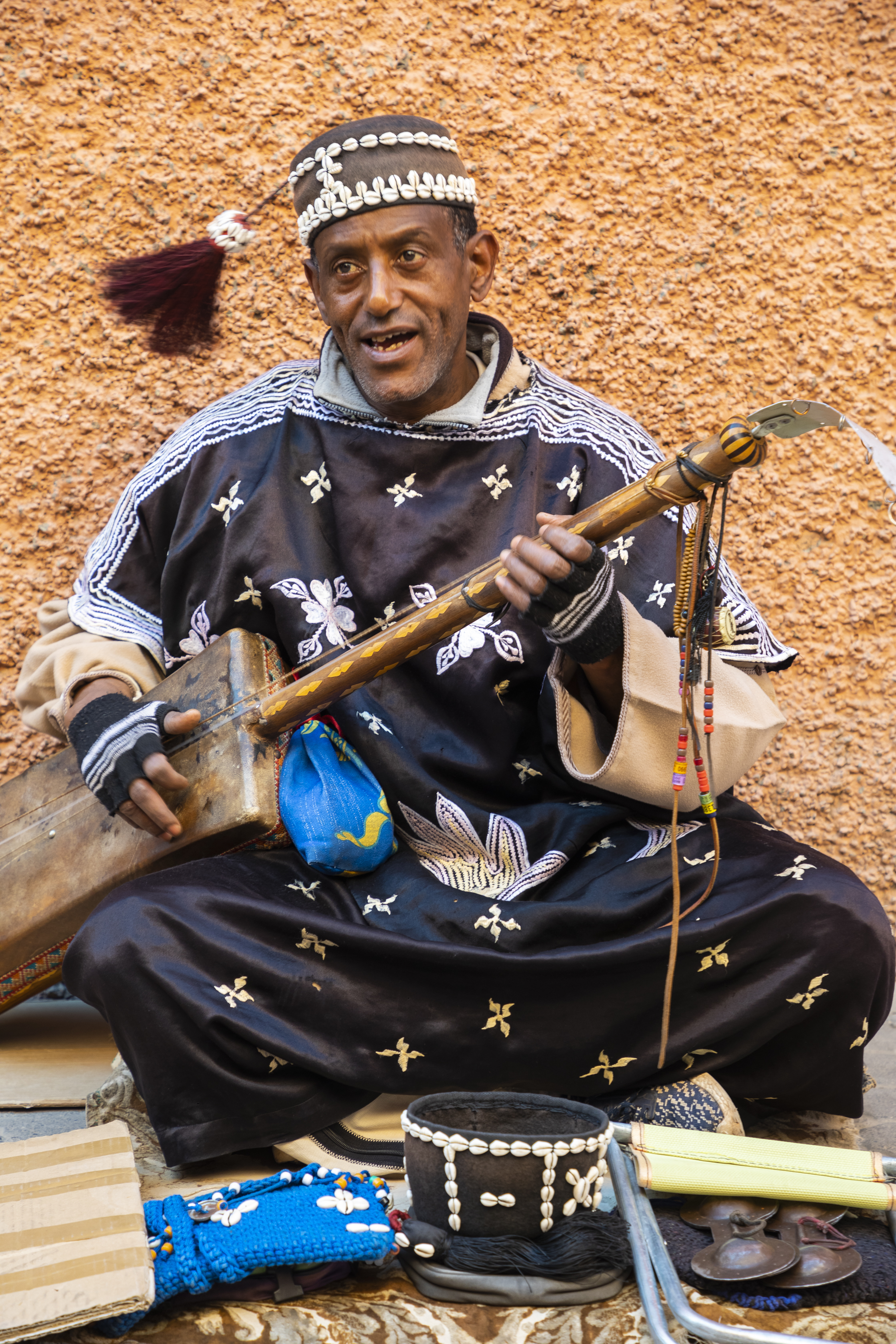




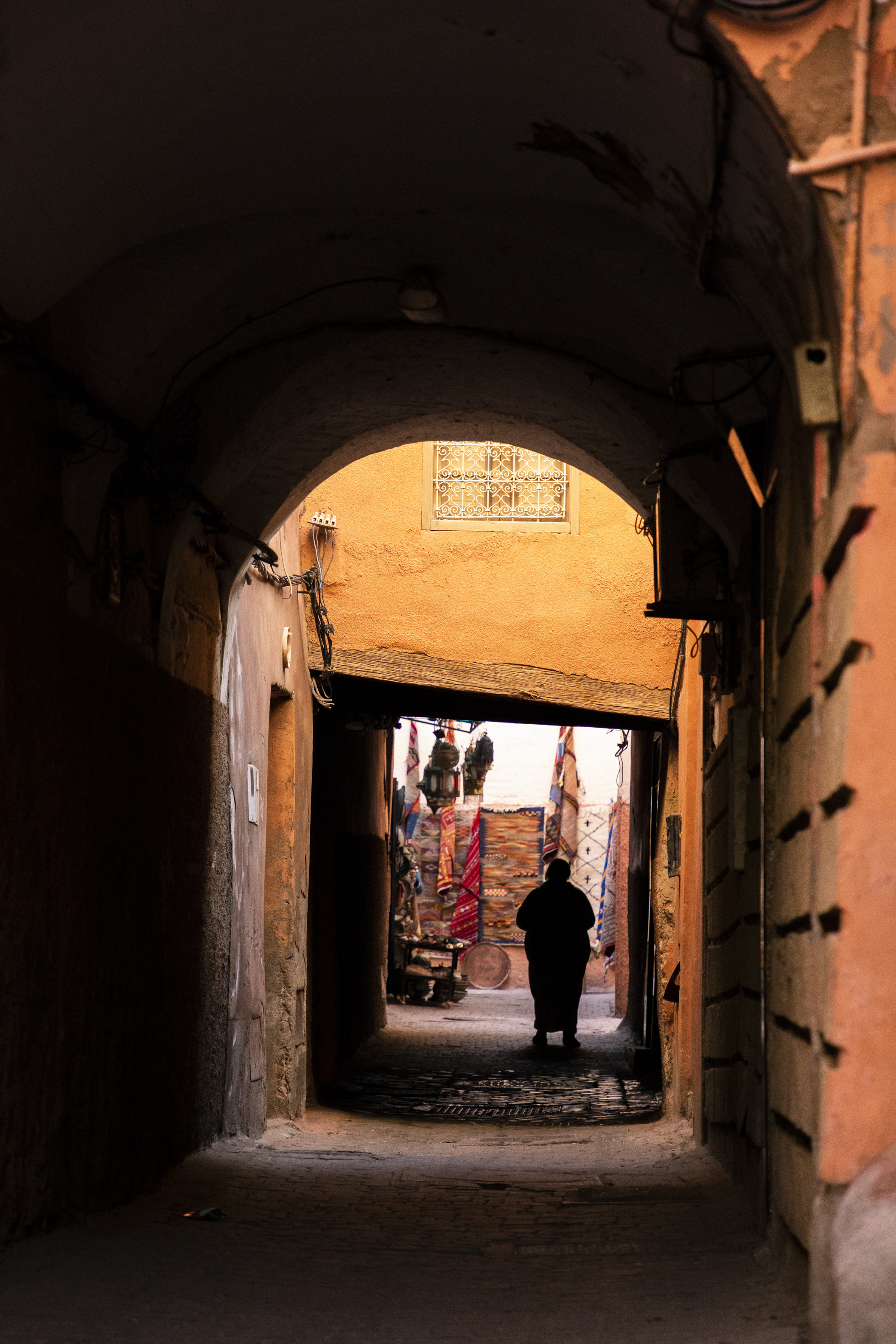

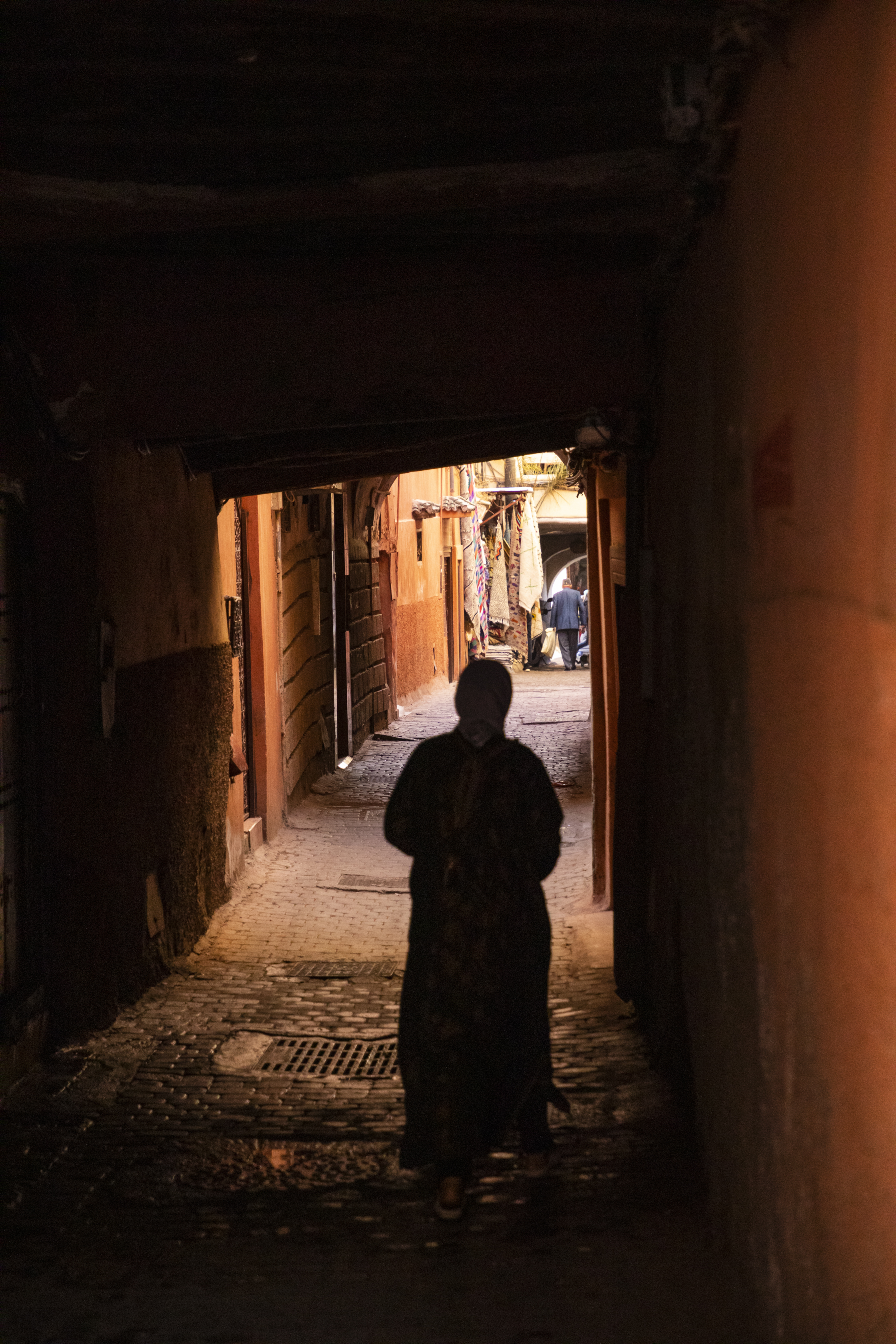






We walked through a tunnel covered with leather bags hanging on all sides. The morning sun was beginning to warm up the air. I saw a little set of stairs going down cut into one side of the tunnel. It seemed dark and cool so I decided to poke my head in. We had walked straight into the back of a bakery.
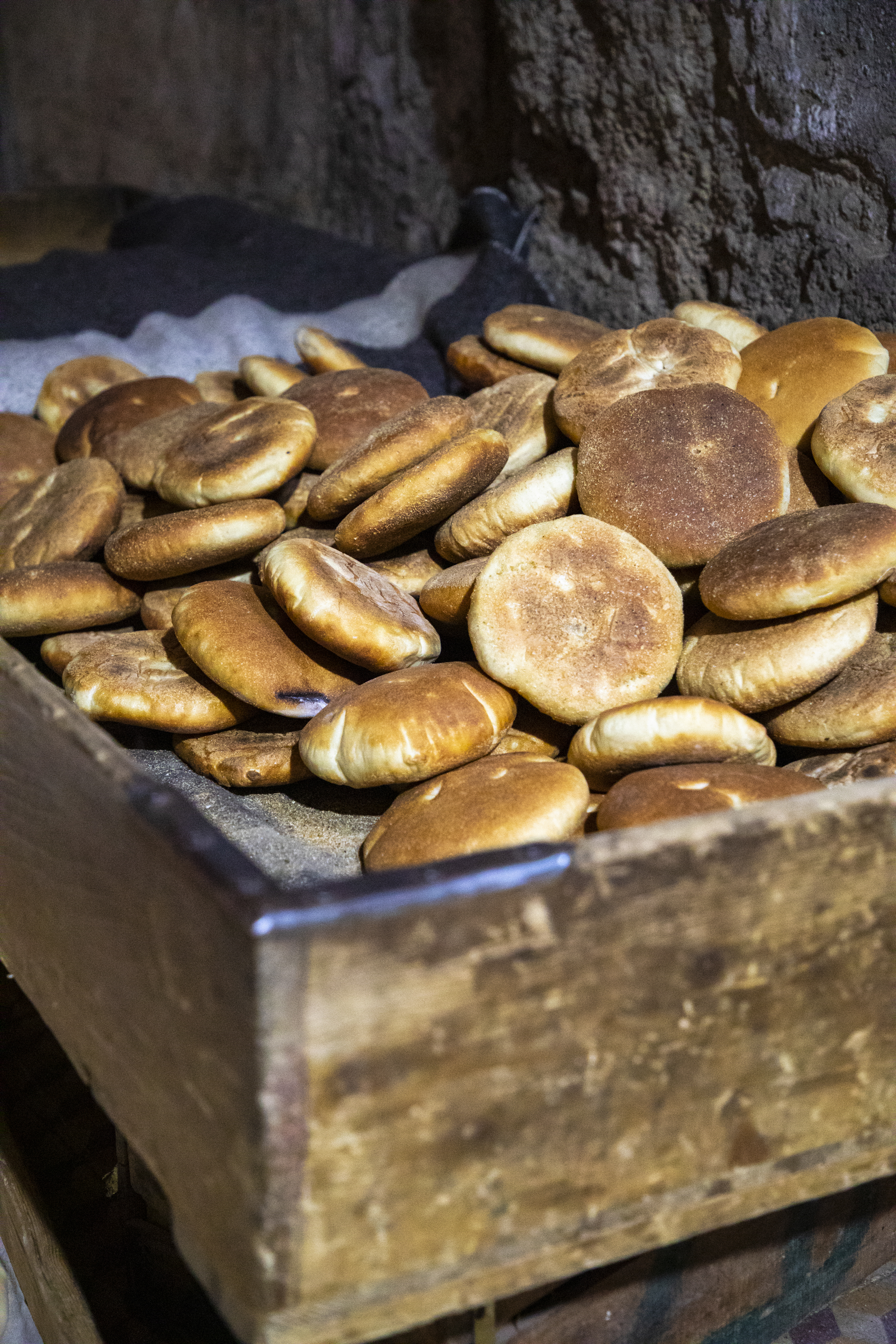
Patties of white dough were laid out in trays ready to go into the stone oven and golden round ones were being removed from the oven. Freshly baked bread is one of the best things in the world, no matter where you go. Yummm.
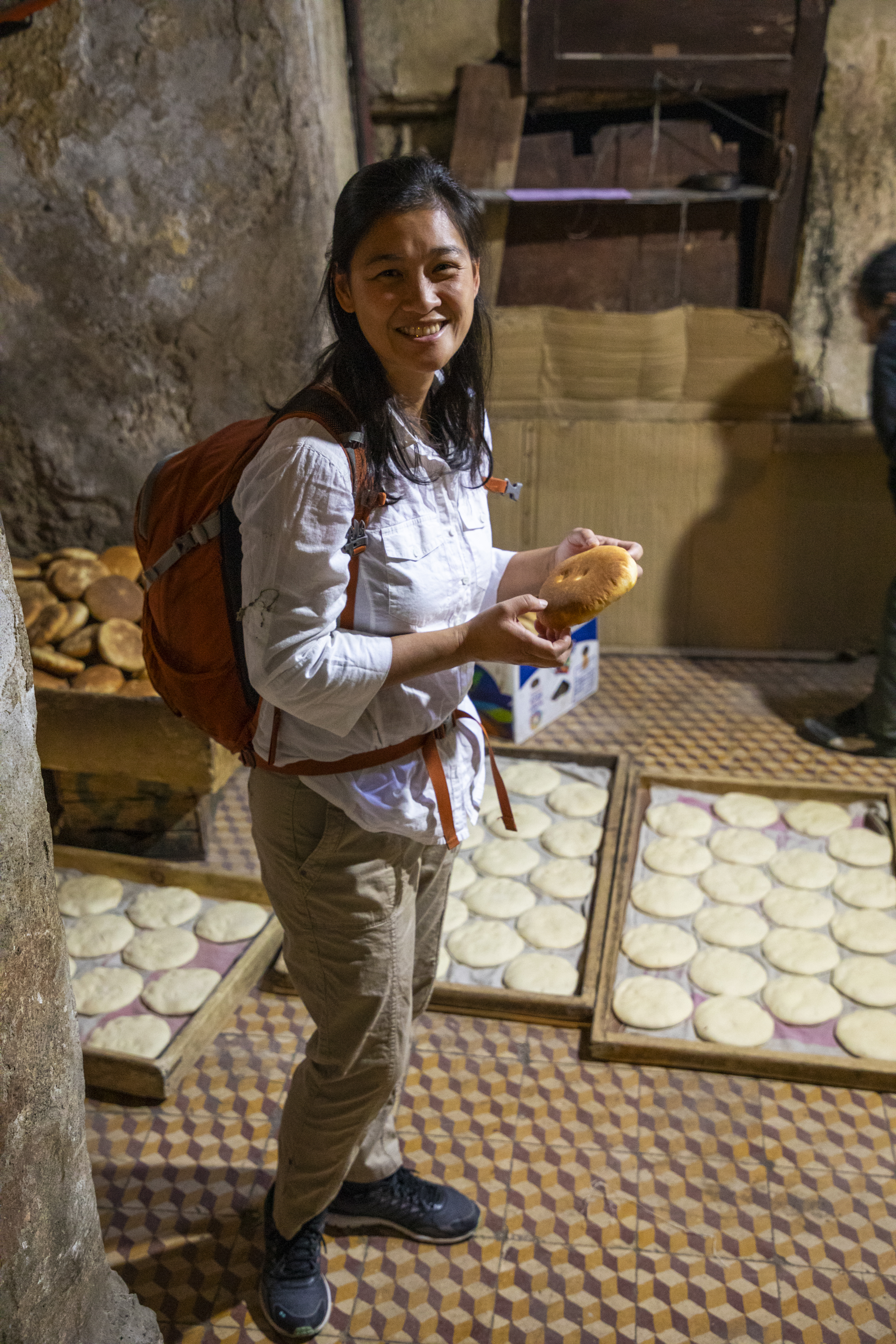

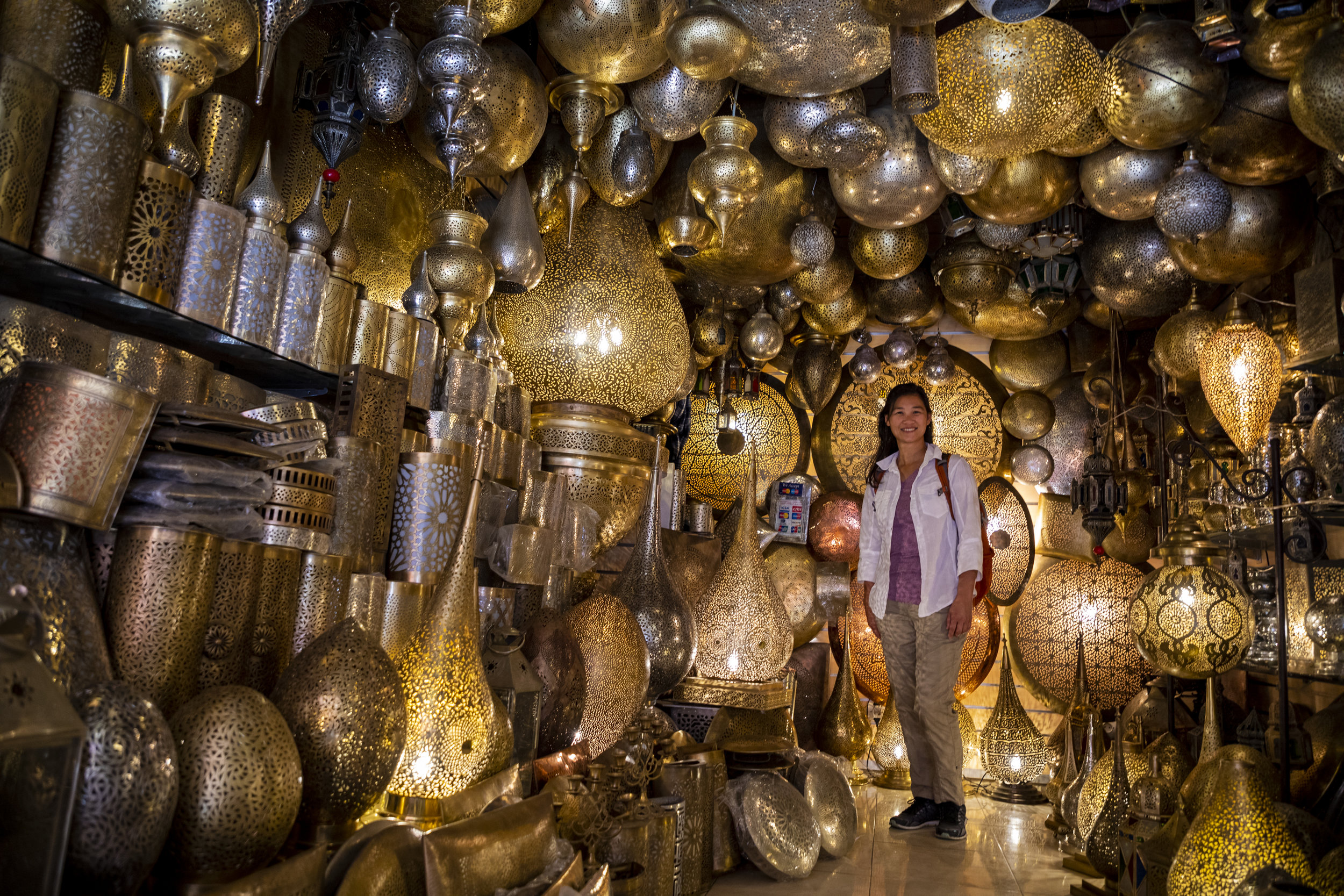
These metallic Moroccan lampshades are exquisite. They cast such unique shadows and can easily change the ambience of a room or area. When we get our own place, I want to decorate it with some Moroccan lampshades. Does that mean we’ll have to return to Morocco? I wouldn’t mind.
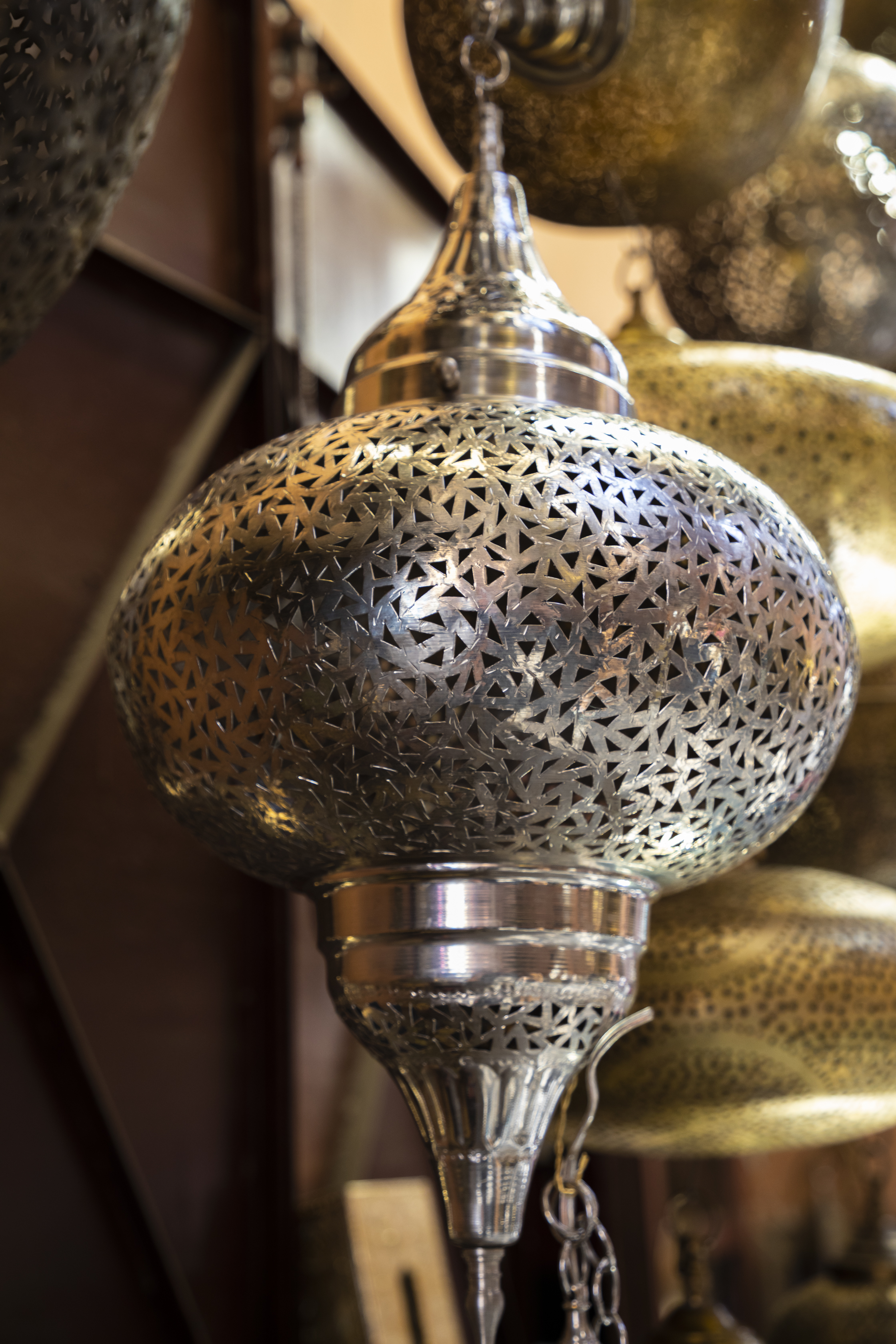

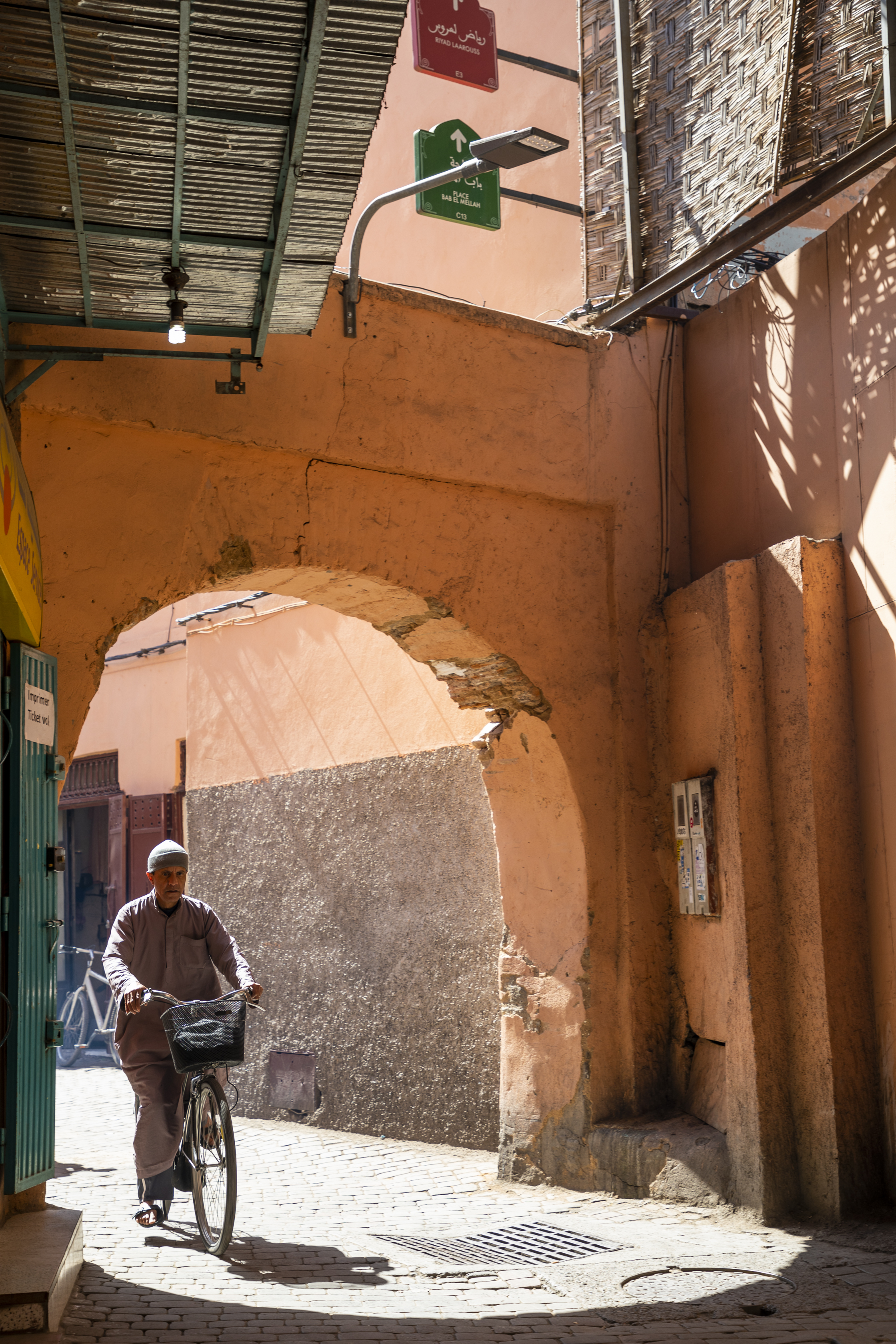

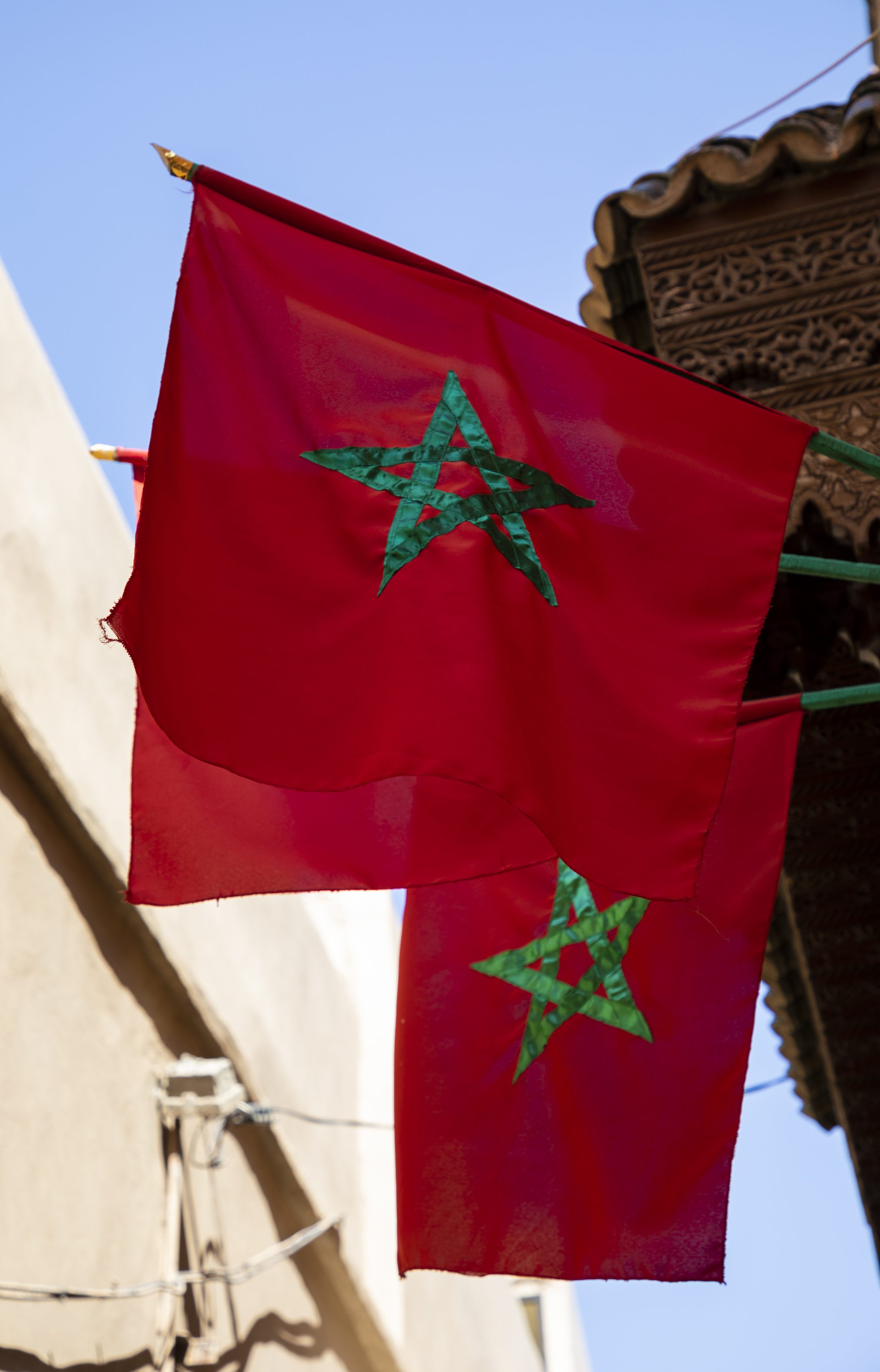
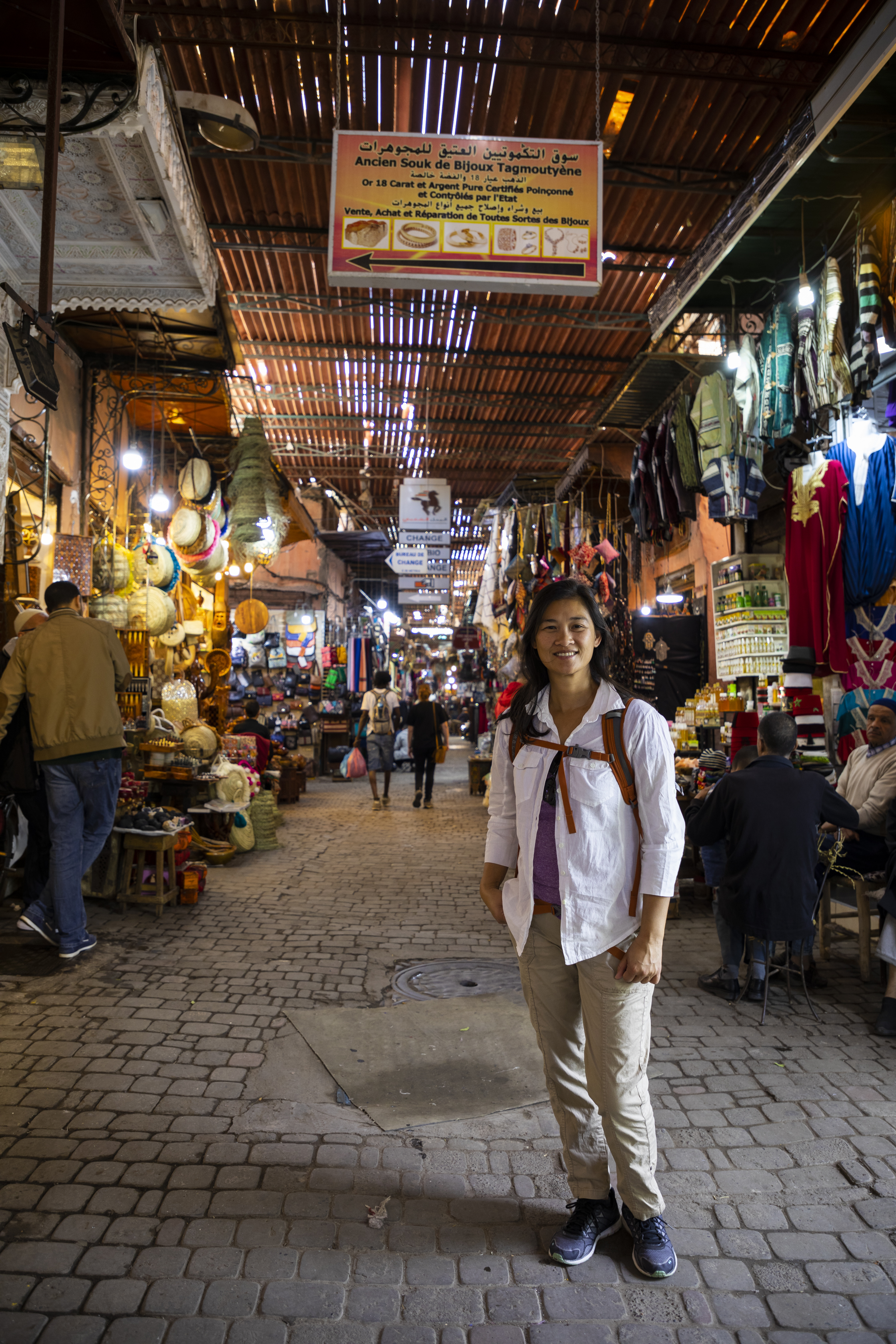
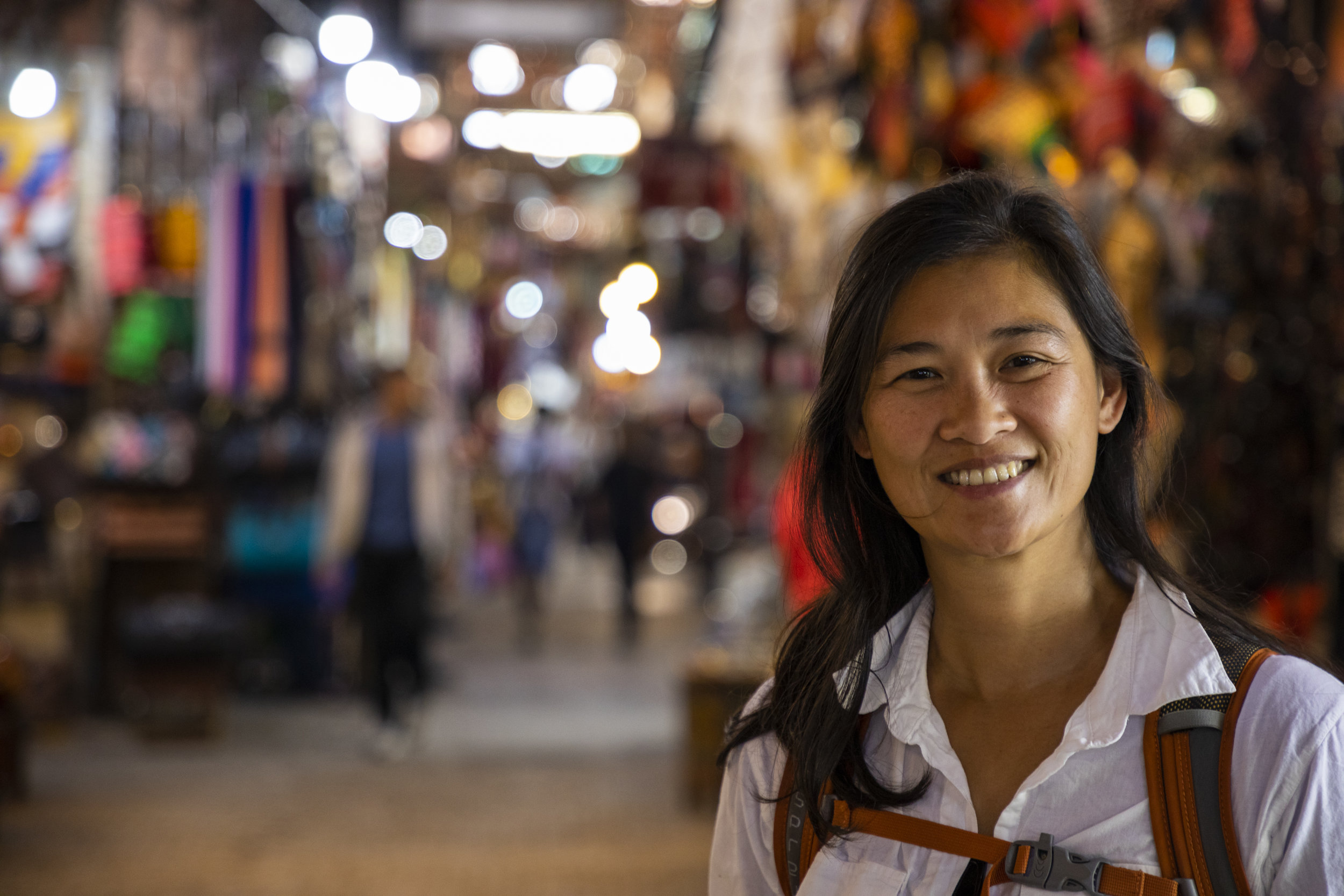
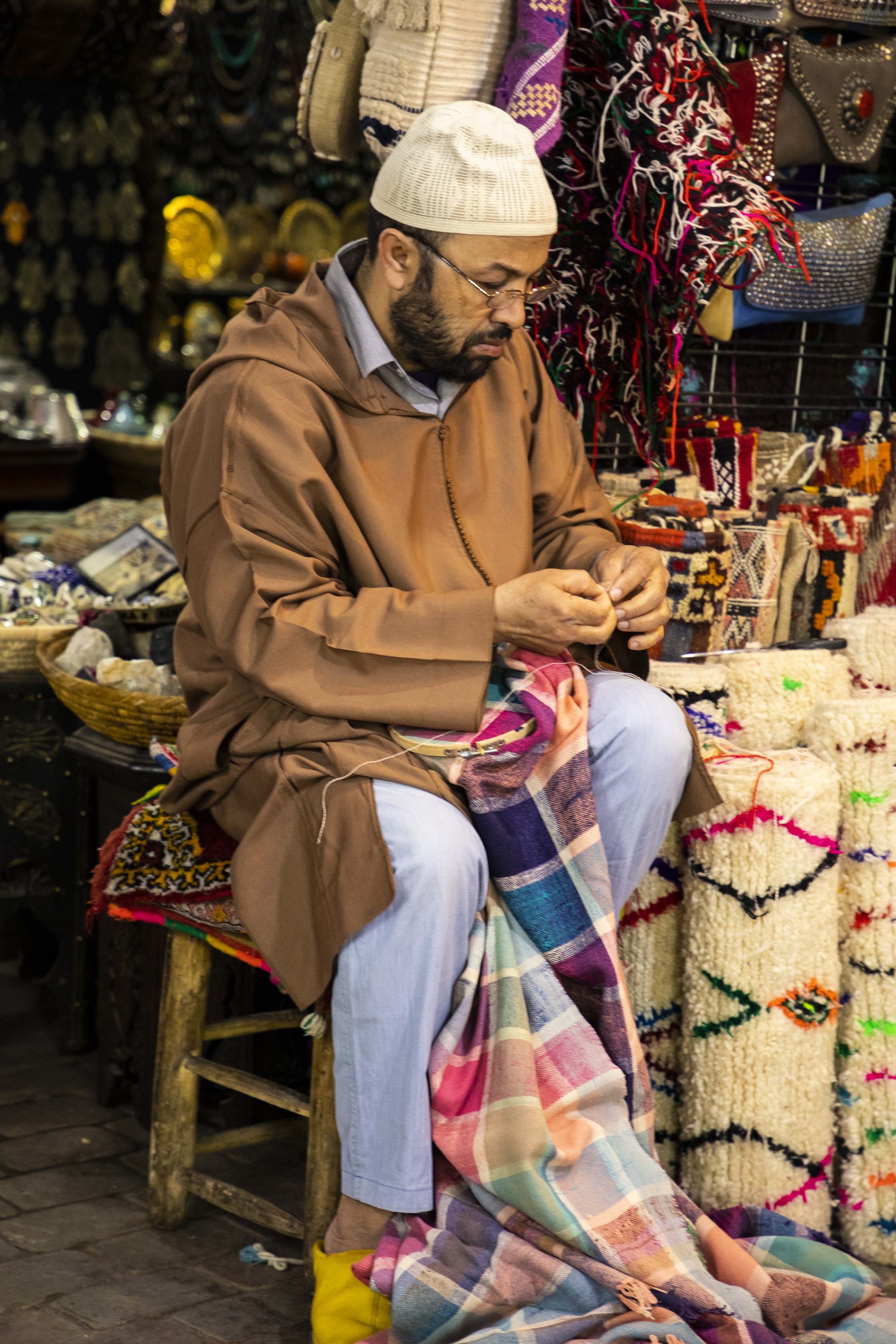

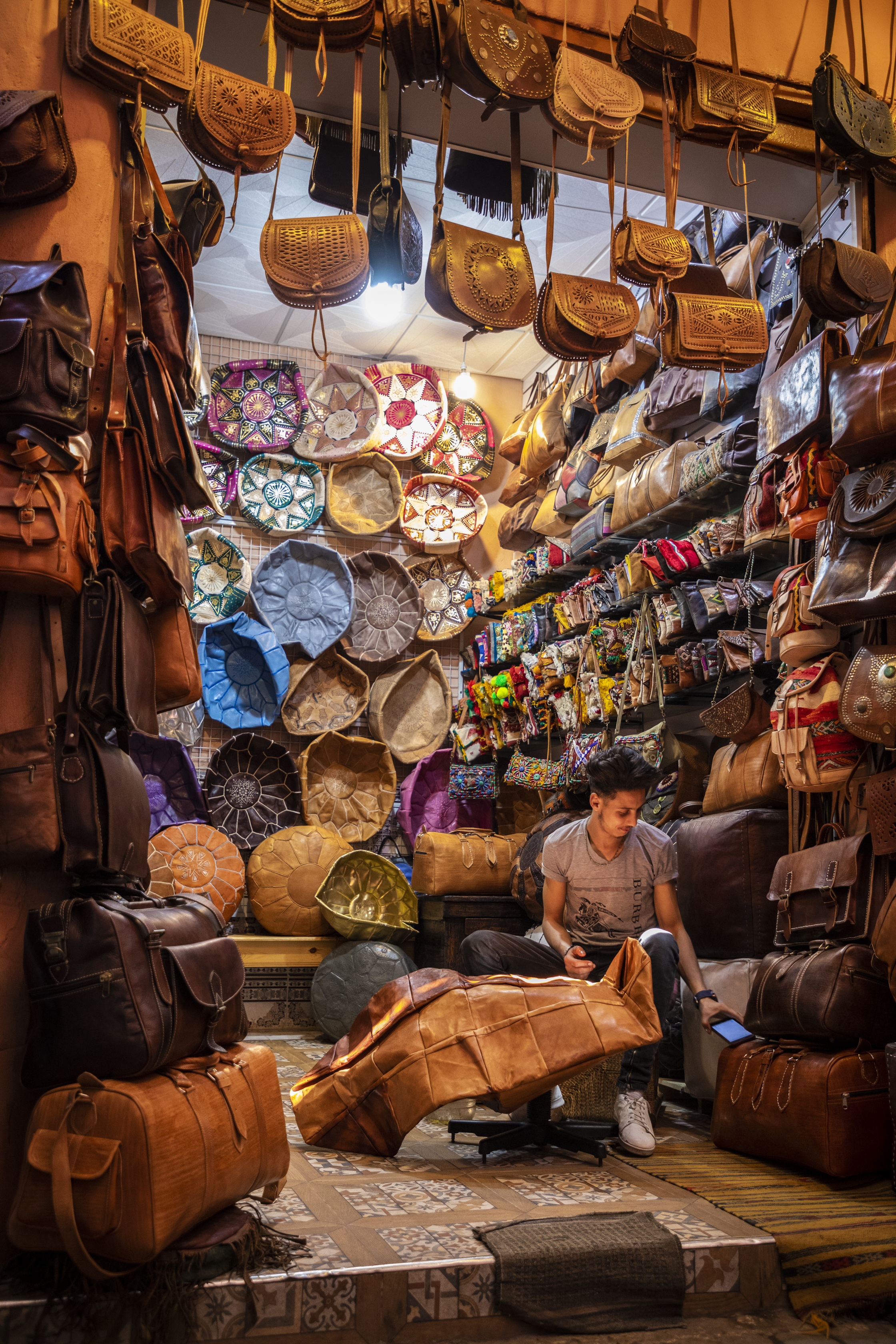
At this leather shop, the young worker told us to be aware of other vendors claiming that their products are made of camel hide, as there are none. Before we came around the corner to his shop, we had already passed by a few who tried to entice us with their camel skin belts and wallets. Hahahaha.
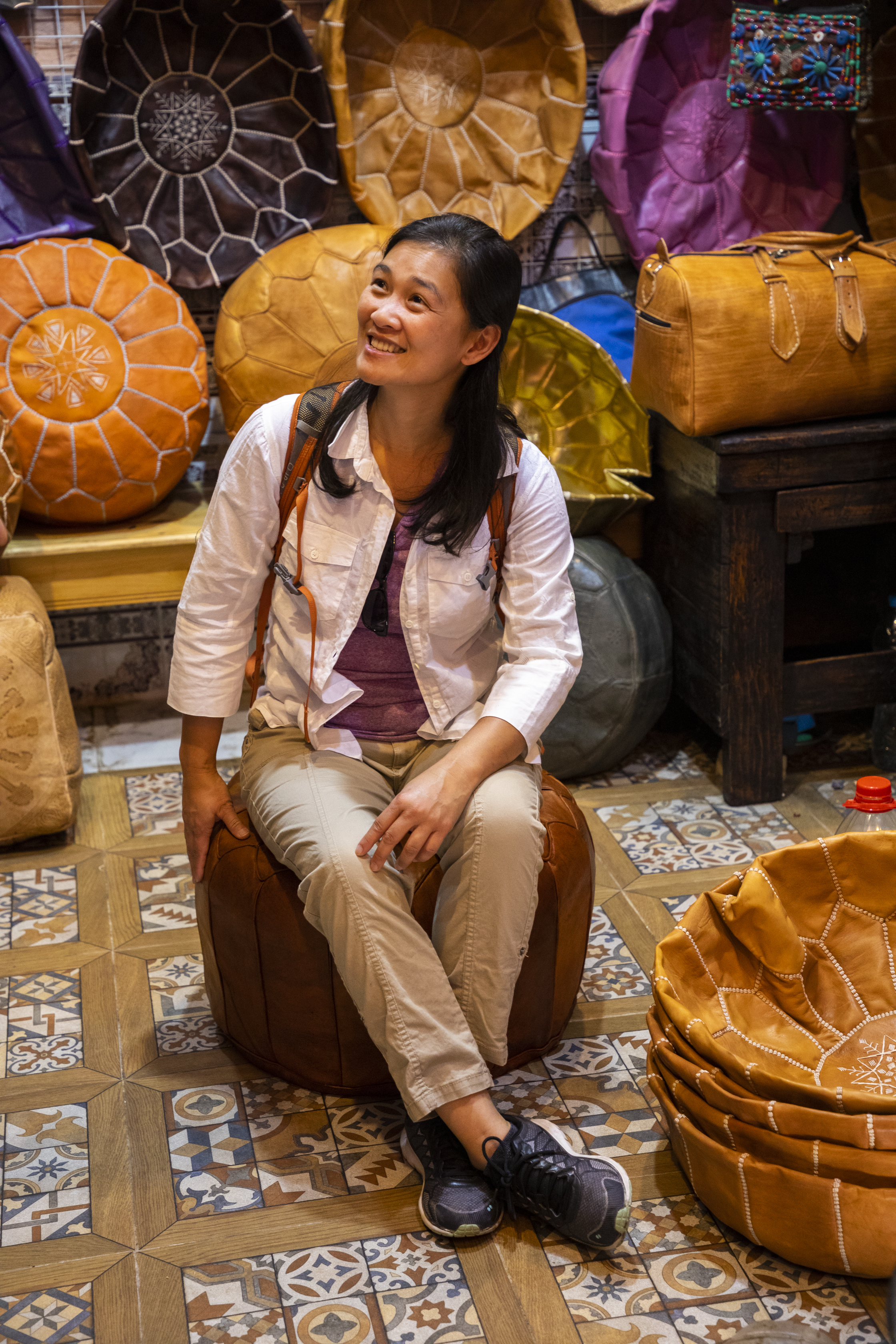
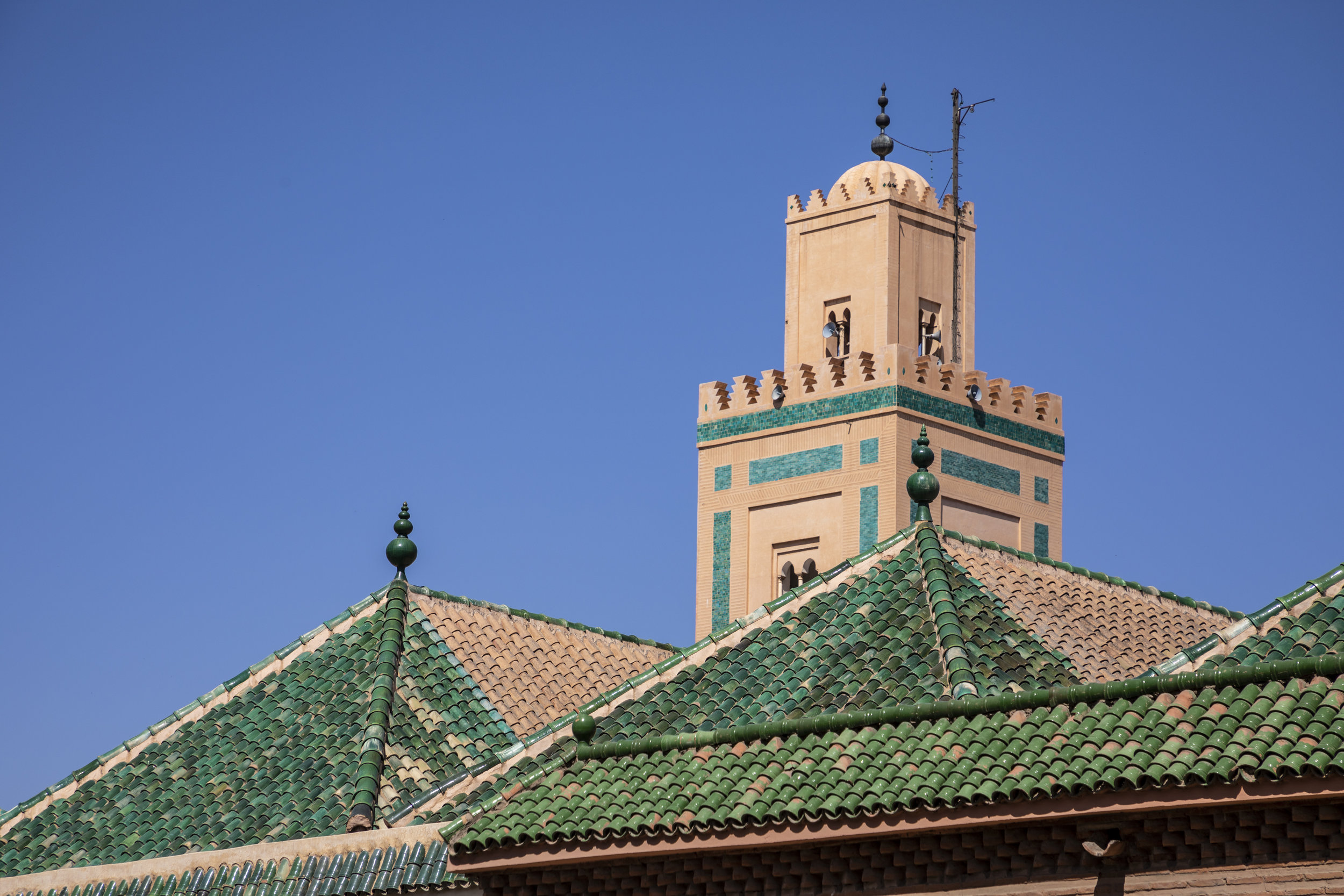





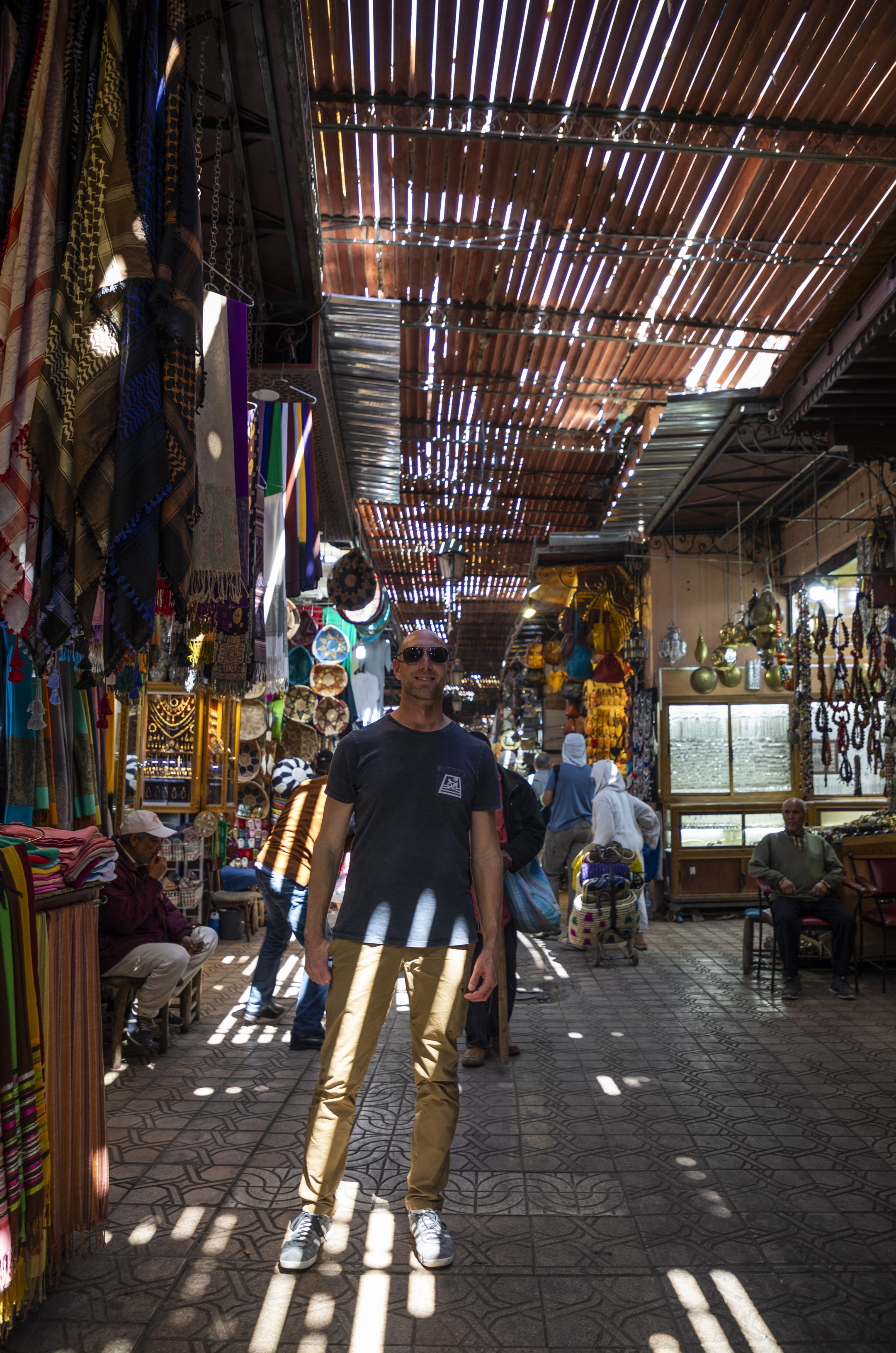
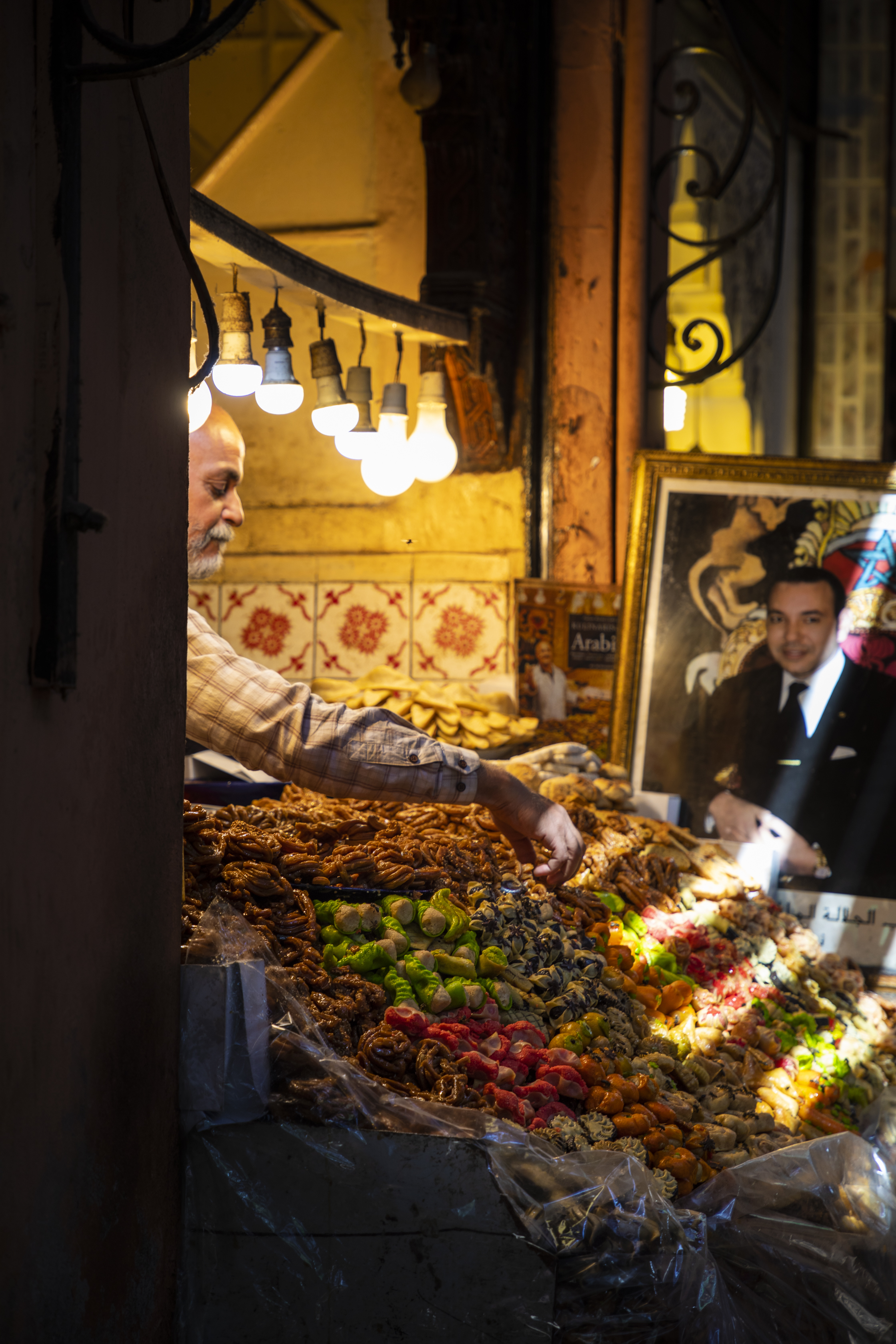
I was excited once we arrived at the dried fruits and nuts section of the market. Finally, something I was interested in buying. Upon closer examination, one of the stalls with lots of sweetened dried fruits was humming with a dozen bees and flies loitering above the fruit. It’s just day one; are we brave enough to try this yet? The answer is a definite no, not before the upcoming climb and trek.





Interestingly, the rest of the stalls in this alley did not court the attention of the insects. Colorful rows of fruits and nuts neatly displayed in square sections and heaping bins gave us more confidence. Almost half of each stall featured dates, lots and lots of different types of dates, all tree-ripened and naturally sweetened. So of course, we had to try. We bought a few dates from every kind that the vendor had. We discovered that both of us had the same palate for dates. The texture of the extravagantly expensive dates was too mushy and sweet, whereas the cheapest ones were too dry, hard and chewy. Apparently, dates are very healthy. Our driver told us seven dates a day would help regulate our systems. Now back in the states, I have gotten into a habit of dropping a couple of dates into my bowl of cereal or granola each morning.
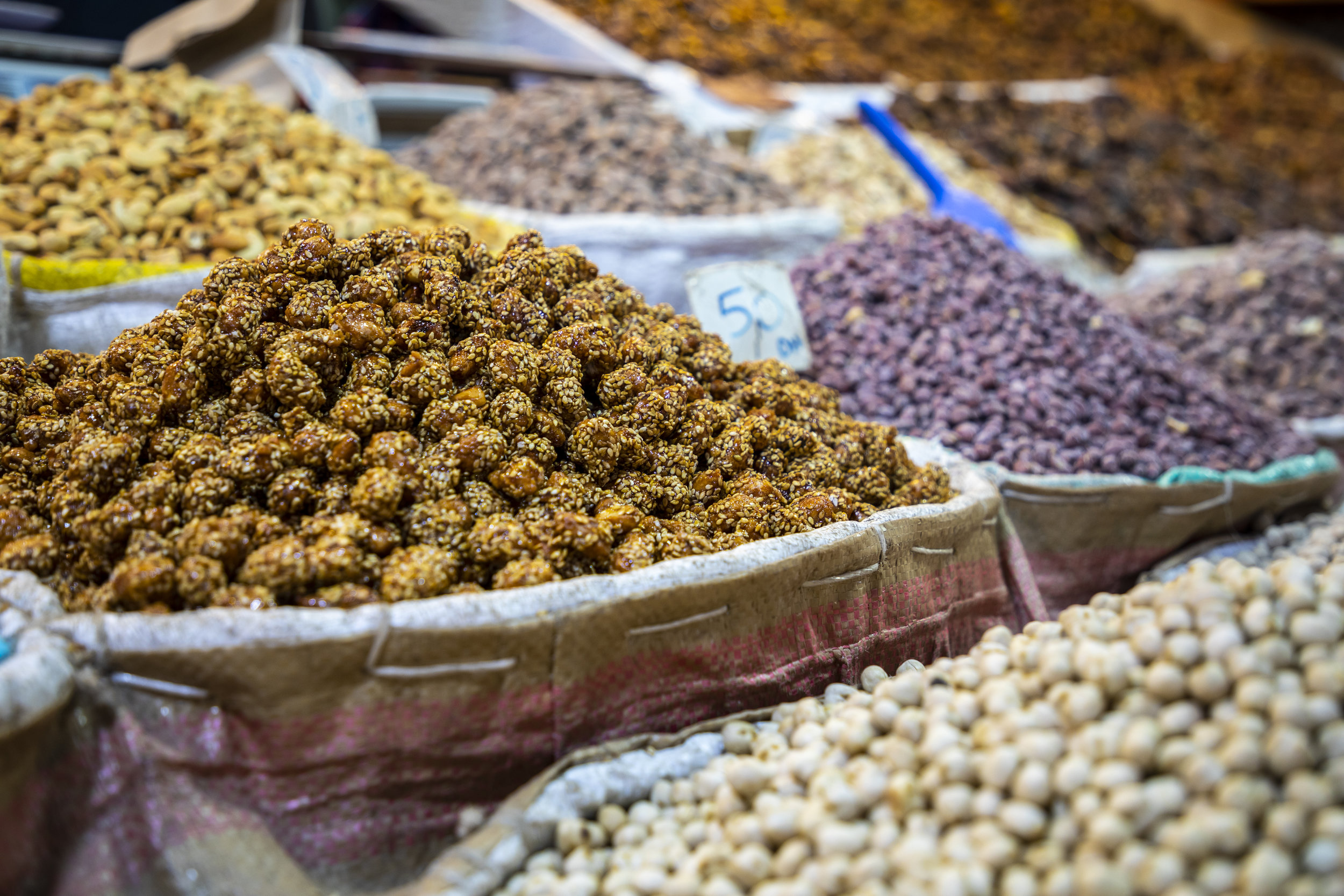
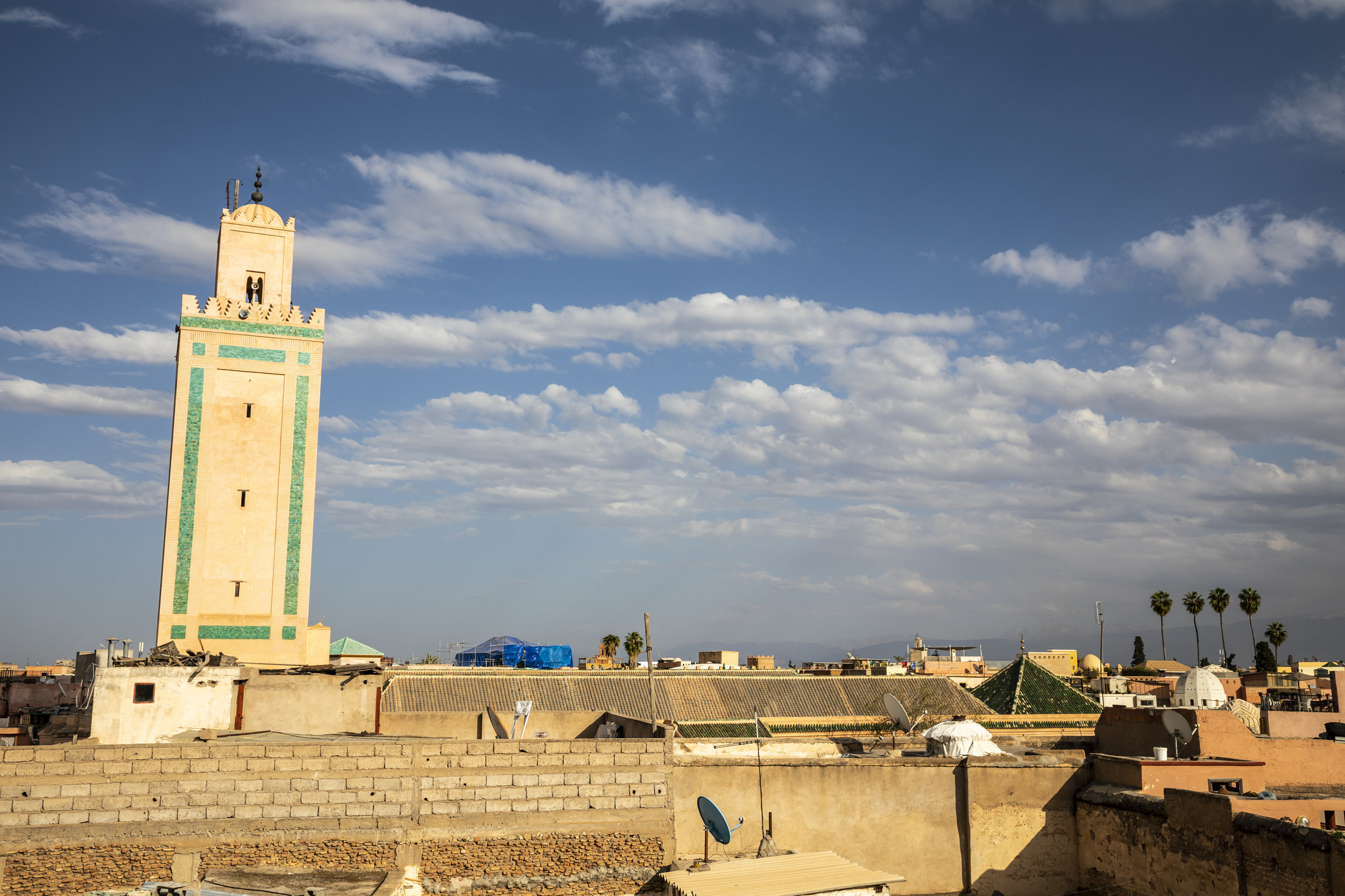
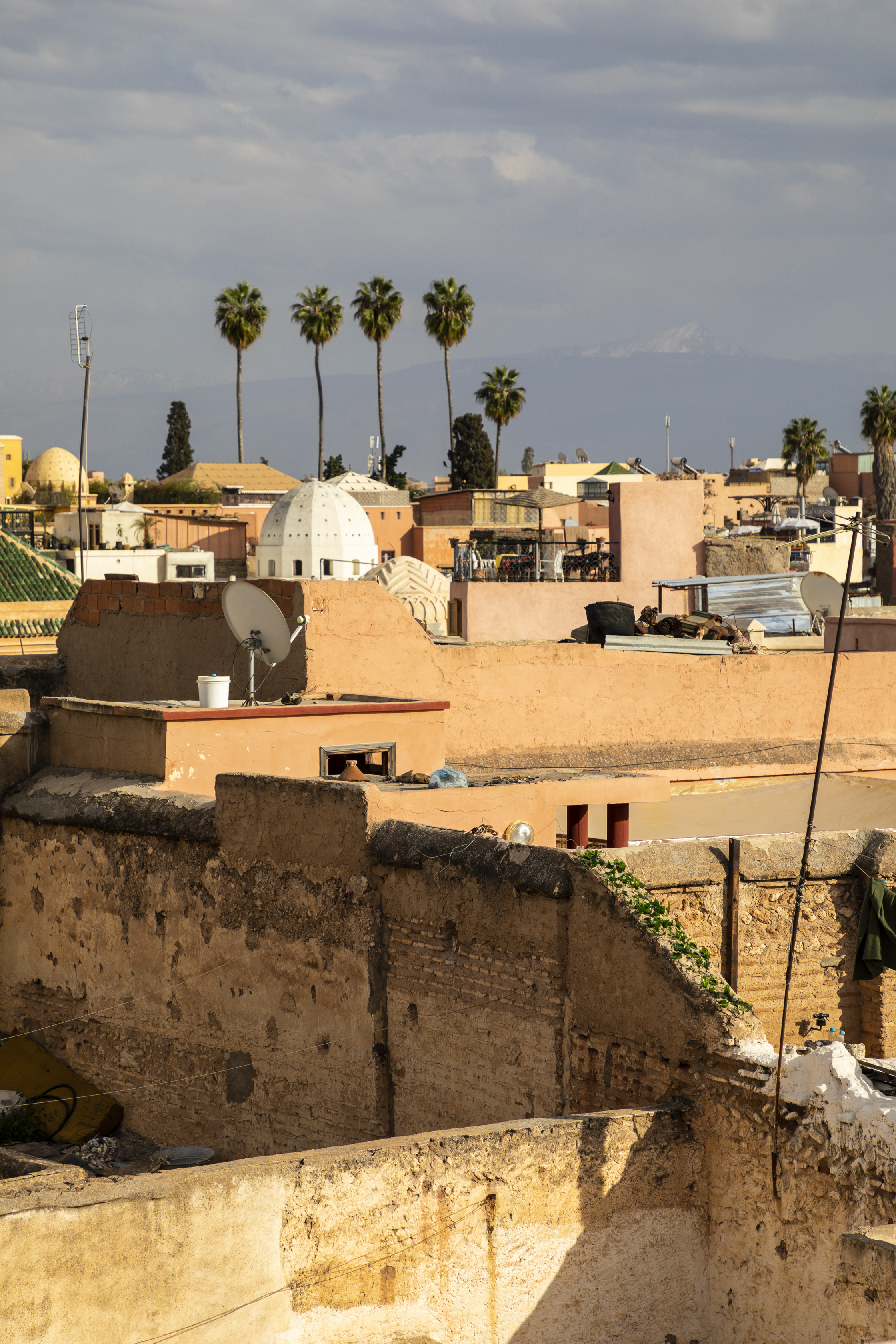
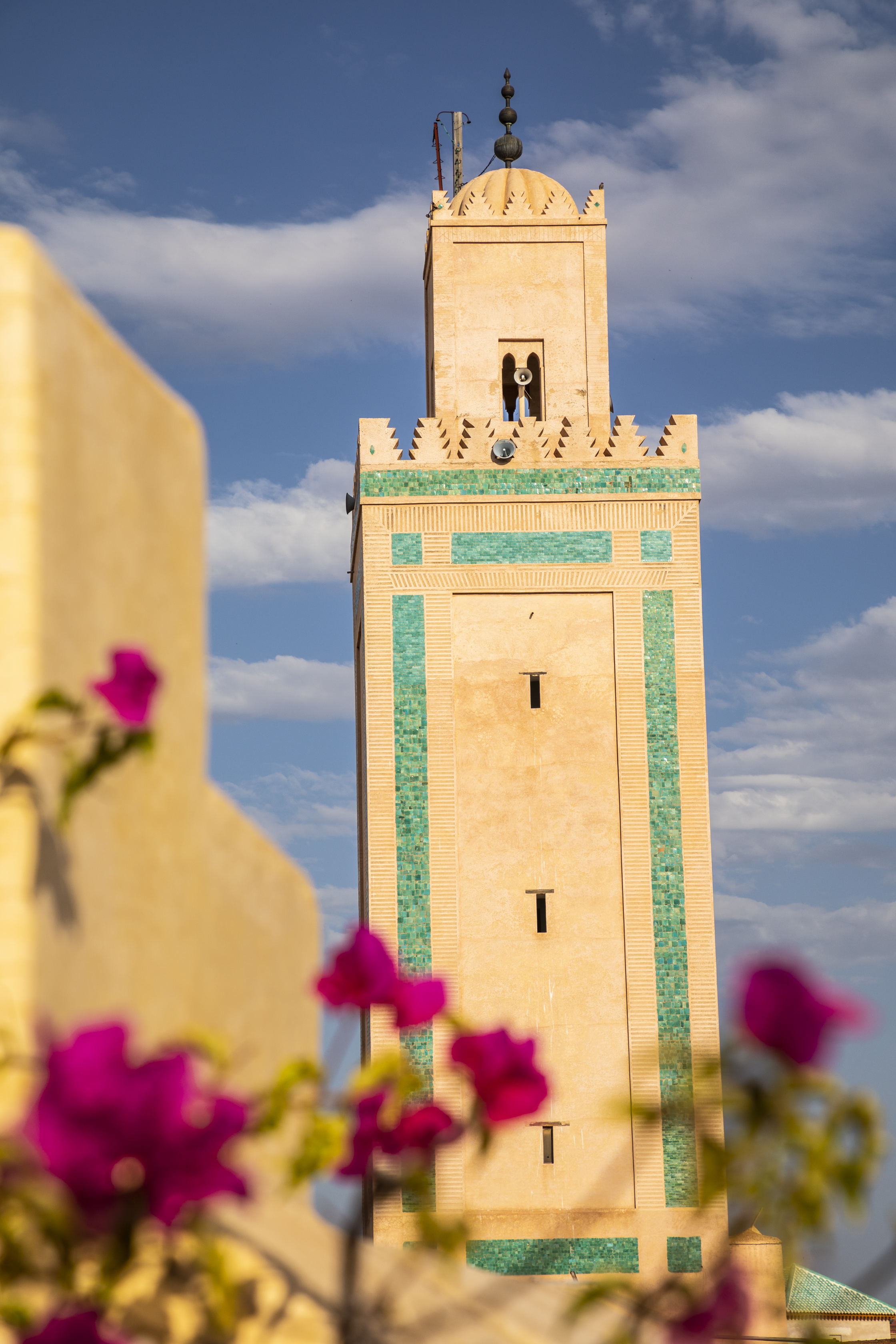

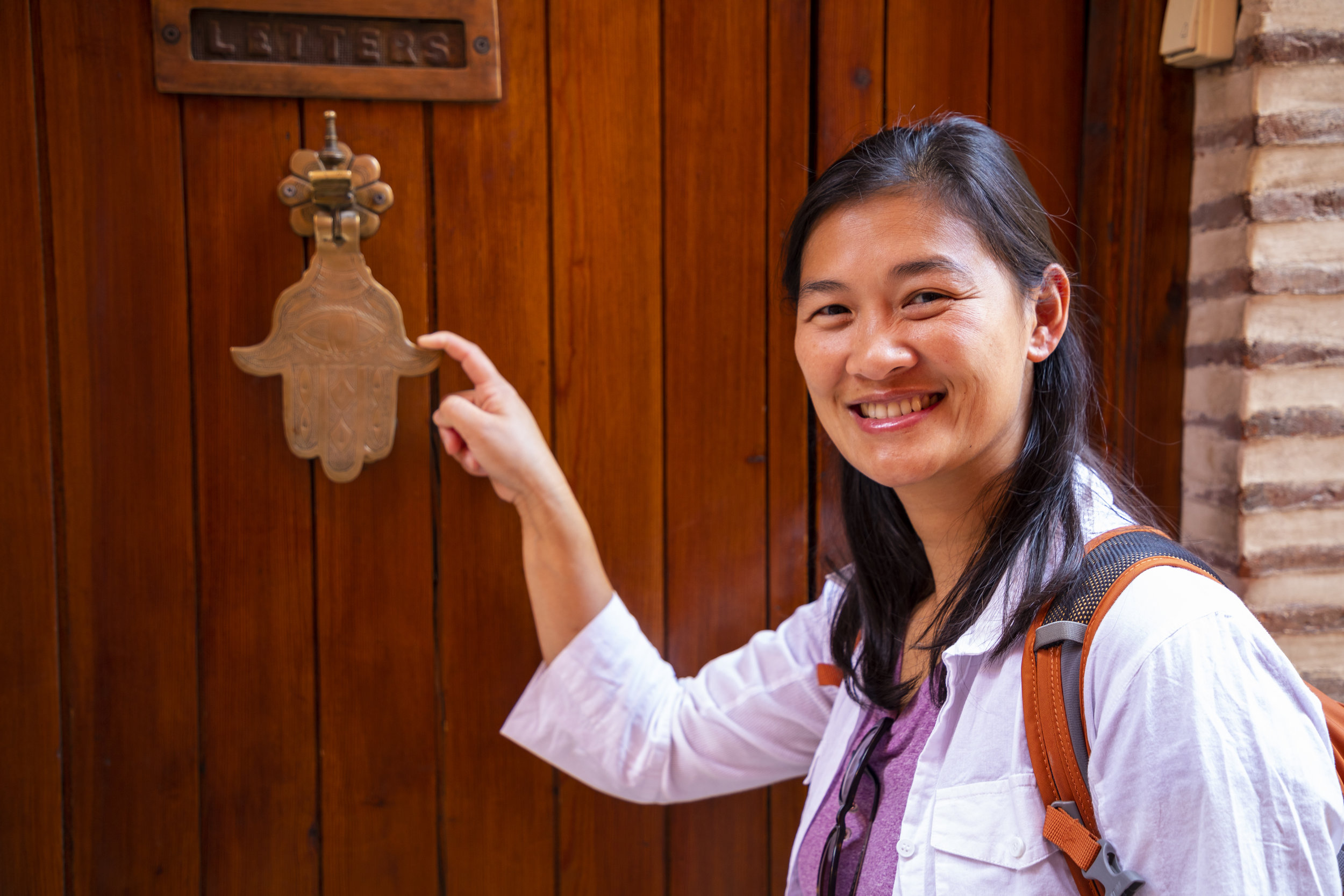
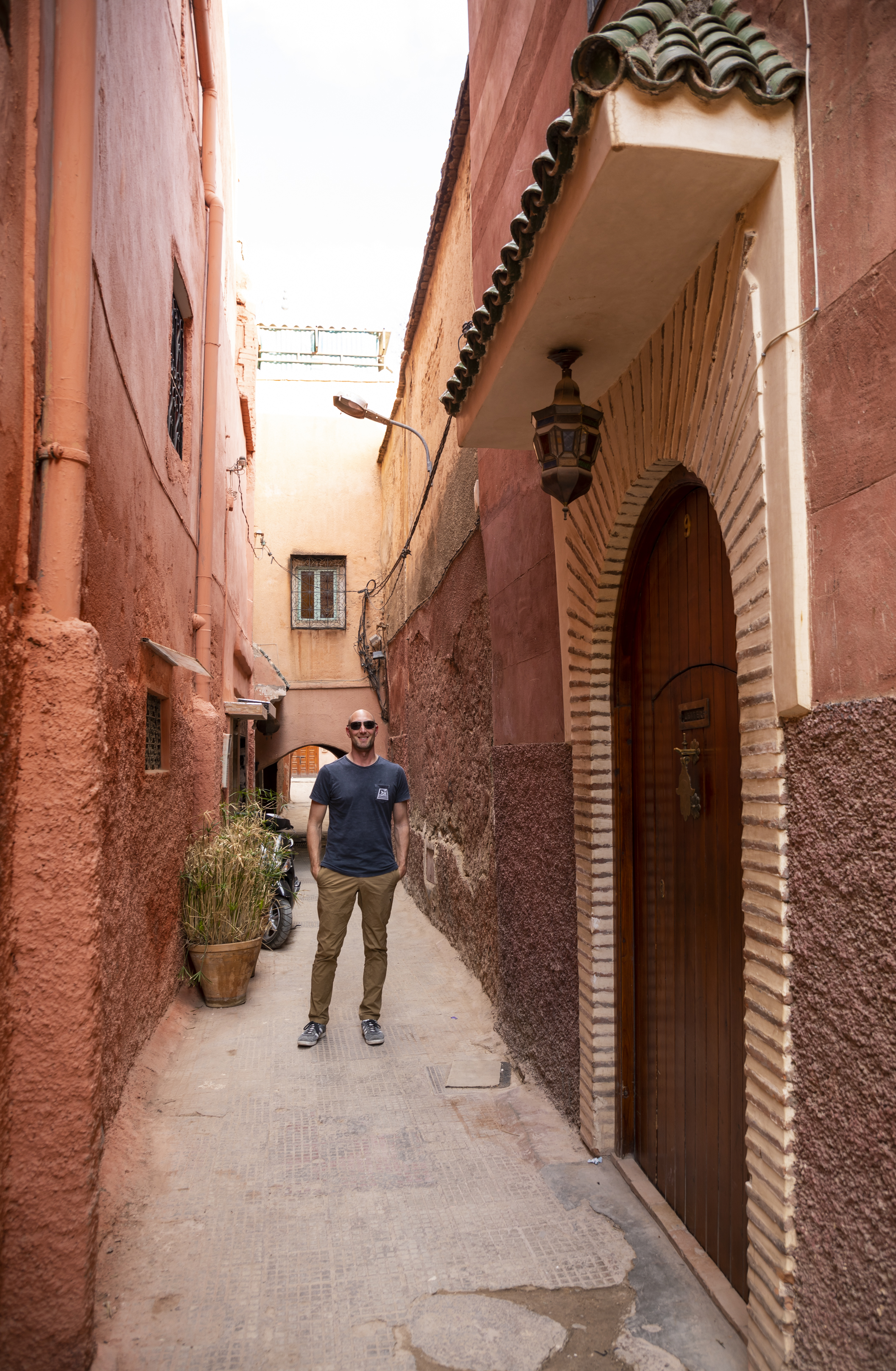
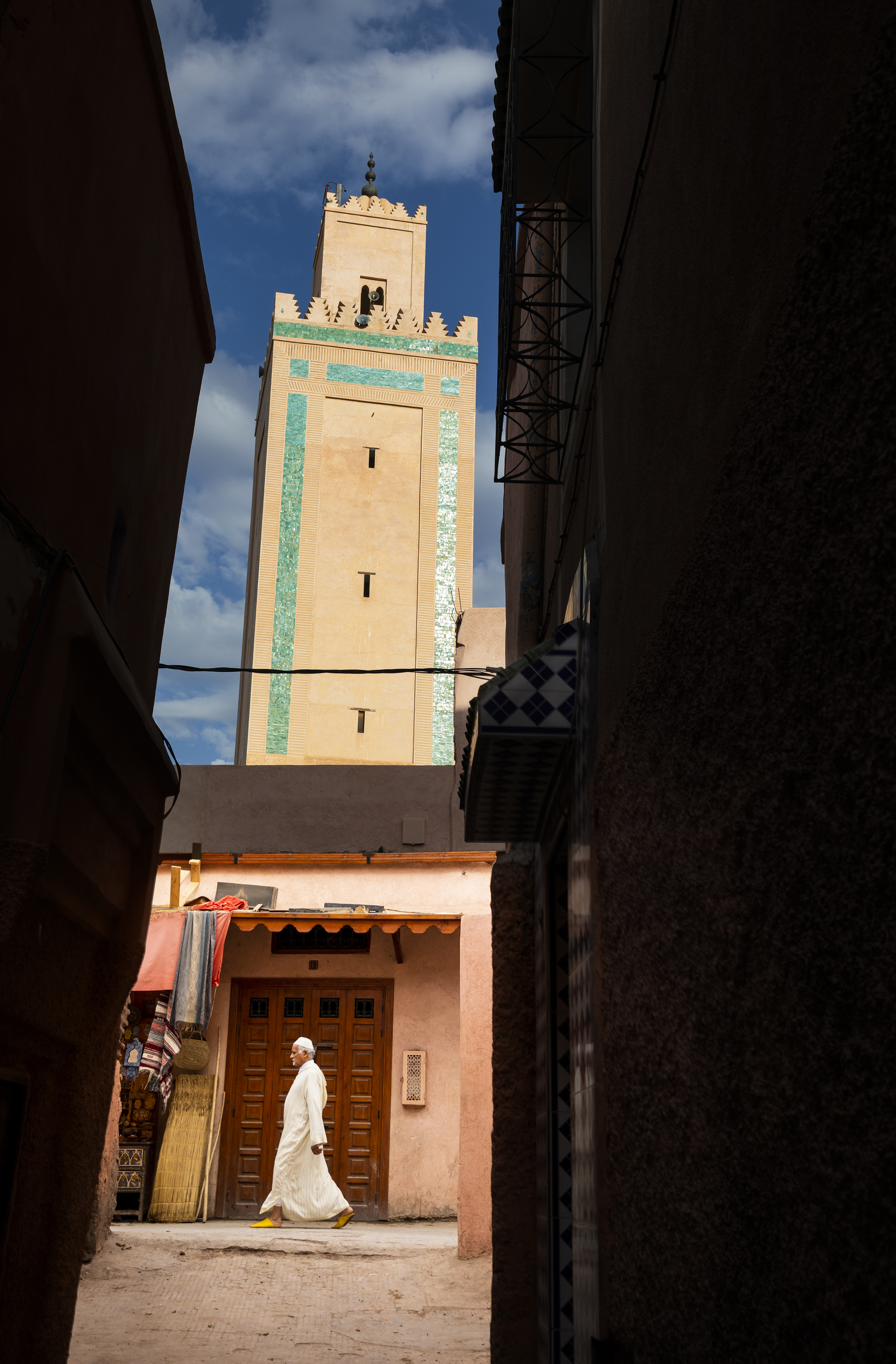



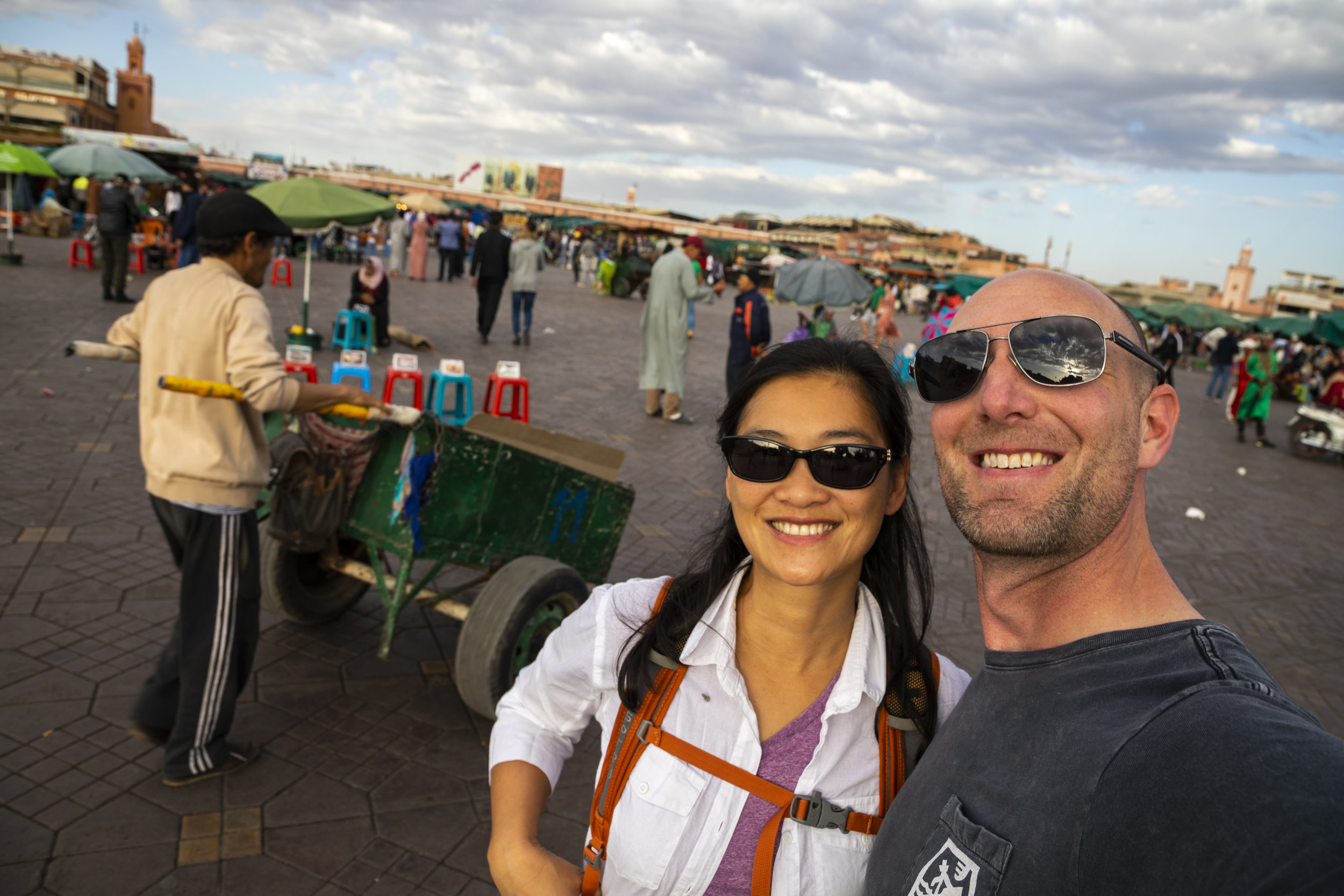
The most easily recognizable landmarks in Marrakesh are both located in the old medina right across the street from one another. Jemaa el-Fnaa is the main square, which doubles as an open market and is also the most common meeting spot for locals and tourists alike. This was where we met Fernando for our photography tour. Just across the street, dominating the skies is the Ben Youssef Mosque, arguably the oldest and one of the most important mosques in Marrakesh.



Originally erected between 1121 and 1132, the Ben Youssef Mosque was demolished after a change of power. Although the new dynasty erected a new mosque at the same site, people continued to refer to it by its old name, Ben Youssef Mosque. Through the centuries, this mosque had undergone many stages of existence from being the religious and academic center to being abandoned and condemned to ruins in the 17th and 18th century. It was once again reconstructed in the 19th century without any remnants of its earliest designs except that it stands on the original site and that it is still commonly called by its original name. So, can it be considered one of the oldest mosques if the building material is completely new but the sentiment attached to it is centuries old?
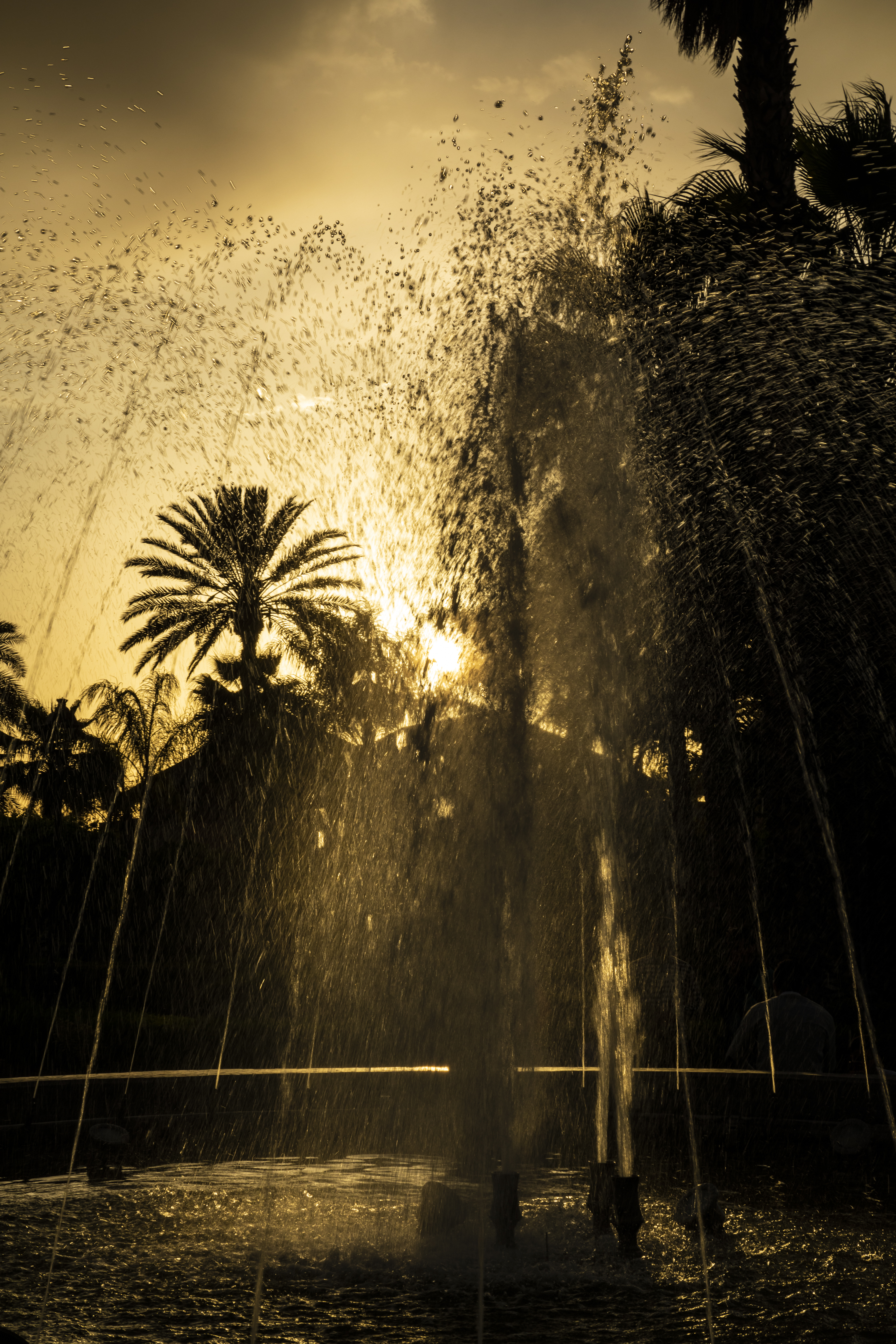
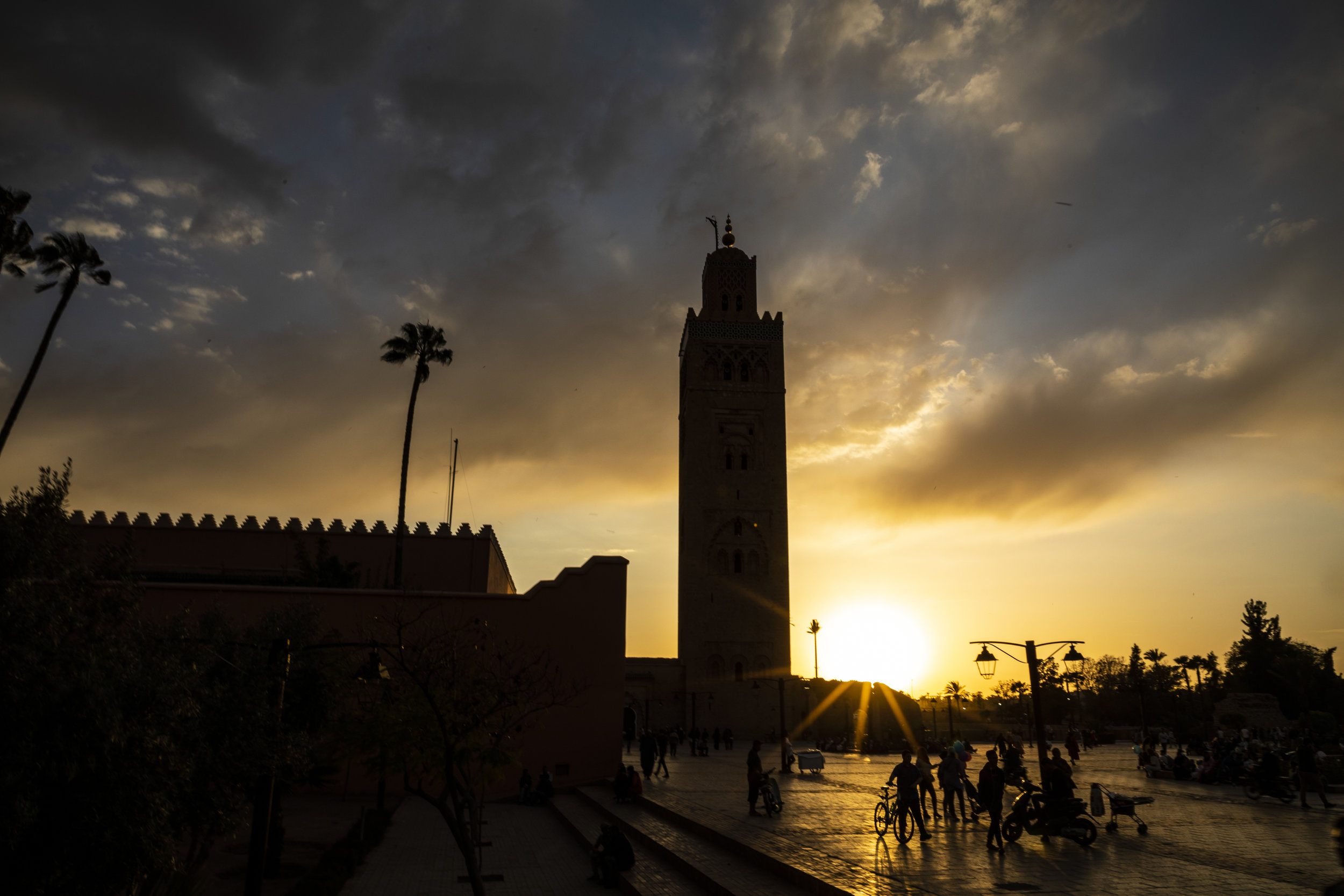


In the middle of the old medina is the Jemaa el-Fnaa Plaza. During the day, this plaza is always busy, full of stalls selling all sorts of merchandise. At night, it is transformed into a food market, permeating the air with smells of smoked and grilled food. After walking around a bit and realizing that pretty much all the stalls had the exact same menu, we succumbed and found ourselves at a small table ordering more than we could eat. I usually do not enjoy olives in the United States. They’re always too mushy, way too salty or over marinated with other flavors. I found the olives here delicious, fresh, with a little crunch and topped with just a dash of seasoning. I ate more dates and olives on this trip than I had consumed in my whole life until this point.


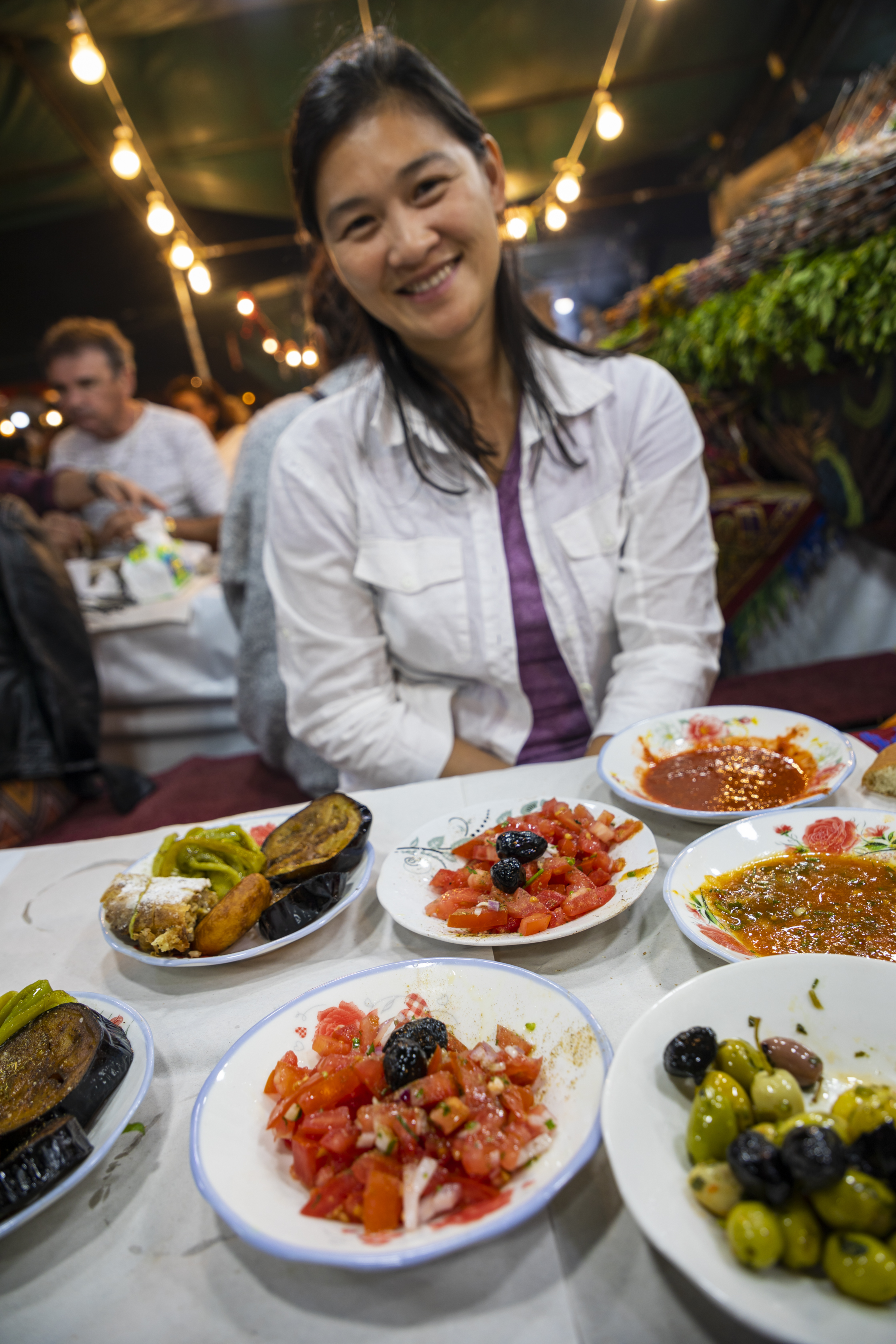
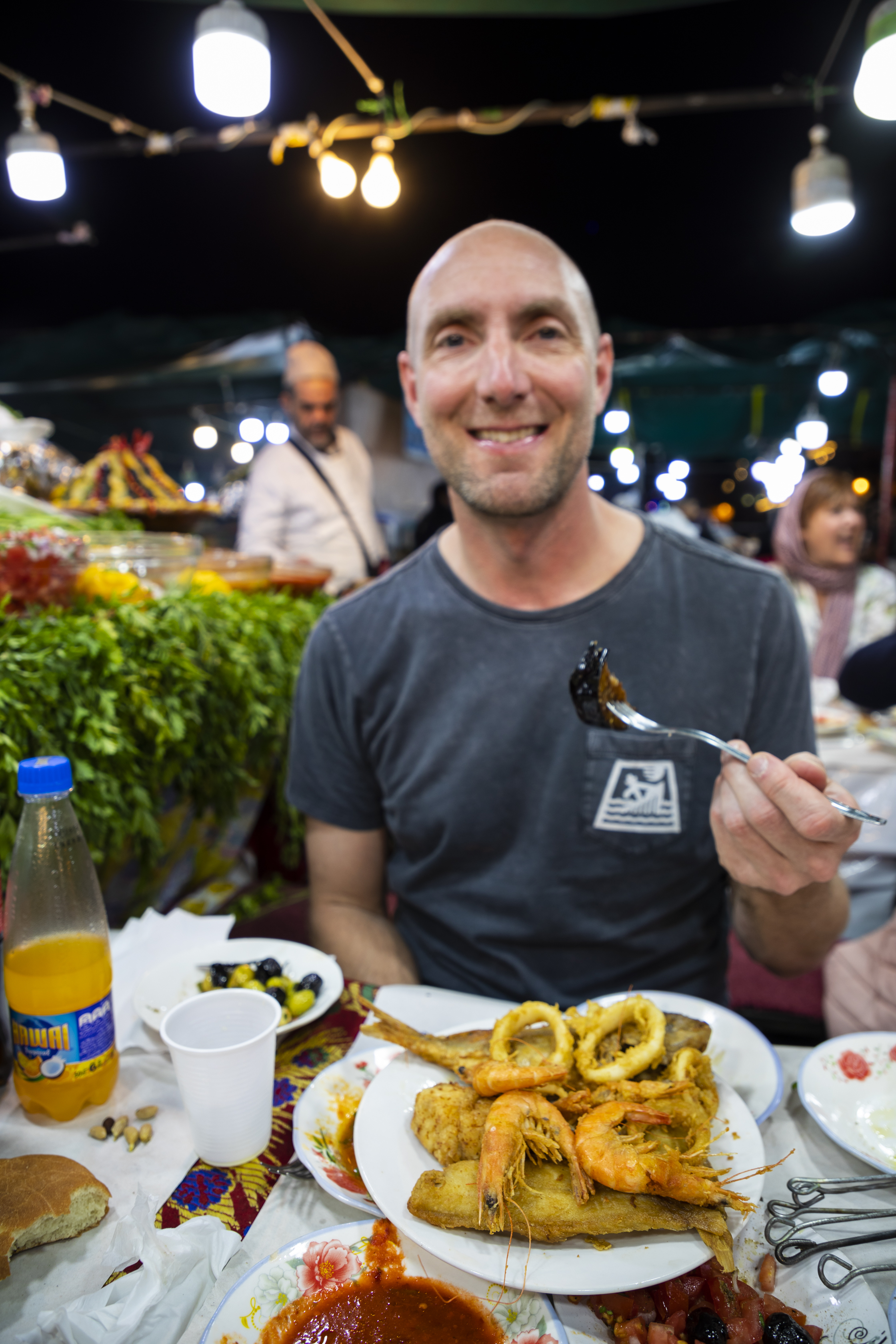
Still unaccustomed to the currency and the monetary writing system, I had doubts as to how much the bill came out to be. We ended up overpaying by a place value. The waiter was extremely nice. He showed us how to read the comma and encouraged us to ask if we ever have any questions. Instead of the much-rumored accounts of pickpockets and trickery by the locals, we found kindness and integrity throughout our stay in Morocco, except for one time towards the end of our trip in Chefchaouen, the Blue City.
